Awareness
How Meditation Keeps it Really Real

I’m not going to lie. I’ve tried ‘sitting’ for over an hour a day consistently for more than two decades. While I’ve been able to accomplish this seemingly impossible feat on a rare occasion, I know of yogis and sadhus that have gone into deep meditative states for twenty years or more. The entire time I’ve been trying to sit in meditation, they’ve been actively doing it. Or not doing it, would be more accurate. What compels someone to try to calm the mind when the very nature of the mind is ‘to think’? Is meditation all its cracked up to be, or is it some glorified practice meant just for saints and not the every-day-Jane and Joe of the 21st century?
Examples of ‘professional’ meditators abound. There’s the Buddha Boy, in Nepal, who some think is an incarnation of Guatama Buddha, and others think is part of a sinister crowd-manipulating game of charades put on by his older brother. He was observed meditating beneath a tree for months at a time, without food or water, whereupon thousands of devotees descended upon the area. Buddha boy disappeared form his tree, and authorities found him later meditating in an underground chamber.
Then there are the claims in famous books like Paramahansa Yogananda’s Autobiography of a Yogi. He describes sadhus sitting in caves for months, even years at a time in deep contemplation, some barely breathing.
These stories are told with straight faces, even to unbelieving questioners. When coupled with tales of the 82-year old Indian man, Prahlad Janim, who claims to have had neither water nor food in over 70 years, you have to start to wonder if there are other ways to sustain an individual besides on the material, energetic ‘mana’ most of us are accustomed to.
Though these claims are inspiring, and on the outside chance, even possible for the average person, most of us have trouble sitting still for ten minutes, let alone quieting the mind for years at a time.
For me personally, meditation has turned out to be better than all the best books claim, and nothing like the wild assertions on the Internet – that the practice will make us happier, healthier, more peaceful, and live longer – though these claims are not untrue.
Allow me to explain further. Let’s assume we all come to this planet with our own bag of tricks – that means some of our ‘karma’ will serve us very well, and other bits of our ‘karma,’ which is really just a term meaning our most consistent habits of thought and action, won’t make living on earth such a walk in the park.
Your bag of tricks will be very different than mine. Whether or not you believe in past lives, we can at least agree that we are profoundly influenced by the mental and emotional programming of our families and the multiple generations of ‘karma’ (most common emotional trend of their ancestors) that they experienced while they were raising us. If you factor in hundreds or even thousands of lifetimes of this programming, you can see why dipping a toe in the unconscious material of the mind might not always be like taking a walk on a lazy Sunday afternoon.
Meditation unearths the not so sublime – and the incredible. It keeps things really real. Similarly, the reason subliminal advertising works so well on us, as in every magazine, television, and radio ad we’ve ever witnessed, is because it speaks to the parts of our minds that are truly running the show. If our conscious mind is the tip of an iceberg, the unconscious mind is that looming monstrosity of impenetrable ice beneath the surface of the water.
When we meditate, we start to become conscious of the vast influences lurking in the deep. Some of these are good influences, and others are, well, every ‘bad’ emotion we could think of – from greed, to lust, anger, hatred, and self-serving tendencies, to laziness, workaholism, cheating, lying, etc. Most of these emotions are tucked away because no one wants to admit that they are ever angry or jealous or petty. Even more surprisingly, some of us don’t want to admit we are all-powerful, and capable of vastly more than we are eking out in this life!
Here’s where it gets really, really real. While meditation, in time, will make you a more compassionate and peaceful person, it takes getting down into the dark abyss below the surface to dredge up some not-so-pretty stuff before you can ever float around feeling like the world is beautiful and everyone in it is your best friend.
“Some people have a mistaken idea that all thought disappears through meditation and we enter a state of blankness. There certainly are times of great tranquility when concentration is strong and we have few, if any thoughts. But other times, we can be flooded with memories, plans or random thinking. It’s important to not blame yourself.” ~ Sharon Salzberg
Meditation allows what is called ‘the gap’ in some traditions, where you have a split second, or if you are lucky, a few of those seconds, to really think about an action you are going to take, before you take it. This gap, a small, quiet moment when you aren’t thinking of your next move, usually a reaction to some past experience, and not at all a clean, unfettered, pure action based on the moment as it truly is, is invaluable. Some people look at a problem for a lifetime – through psychoanalysis, through conversations with friends, through a dozen other methods of problem solving – and they don’t have the same insight as a ‘gap’ moment can provide. This is why it is called an ‘a-ha’ moment. It is the same type of mental clarity that creative people experience when they come up with a great work of art or a phenomenal musical masterpiece. The amount of mental clearness that can be achieved when the mind becomes still, even for a second, is absolutely earth-shattering.
Mediation is life altering – but – sometimes the ‘a-ha’ moment allows you to realize what you’ve been doing to others or to yourself was really hurtful, exceptionally misguided, or sorely small-minded. Without the awareness of what we have been doing that hasn’t been so wonderful, we can’t truly become who we were all along – before the small-mindedness, or anger, or fear crept into our ‘most common emotional stance’ or way of interacting with the world.
As Sara Lazar, a neuroscientist at Massachusetts General Hospital and Harvard Medical School explains:
“We found long-term meditators have an increased amount of gray matter in the insula and sensory regions, the auditory and sensory cortex. Which makes sense. When you’re mindful, you’re paying attention to your breathing, to sounds, to the present moment experience, and shutting cognition down. It stands to reason your senses would be enhanced.”
When we meditate we are giving the brain, and ourselves more of our full potential to see things as they truly are. Sir John Eccles has stated his feelings on the infinite potential of the human brain, and he won the Noble prize.
In a lecture delivered at the University of Colorado, he stated in regards to the percentage of which humans use their brain, “The human brain has infinite potential- so how can you calculate a percentage of infinity?”
If your reality is closing in due to old patterns and erroneous reactions to people or circumstances, wouldn’t you want to wade through some of your mental detritus to get to that higher percentage of infinity?
Maybe you can’t yet sit for hours like the Buddha Boy, or eschew food and water for several decades, but you can start to ‘get real’ about life and your part in it. It starts with just a few minutes ‘sitting’ every day, and when those a-ha moments come, and I assure you they will, the fleeting sense of time where everything becomes crystal clear, you’ll know the cumulative practice of meditation was worth it.
Animals
The Death Of A Pet Should Be Taken More Seriously By Counselors

Pets hold a special place in our lives, often becoming as cherished as any family member. Yet, when we face the heartbreak of losing these beloved companions, the depth of our grief is frequently underestimated and misunderstood, not only by those around us but also by some professionals who guide us through our darkest times. Why is the death of a pet often not taken as seriously as the loss of a human? This article explores the critical role that counselors can play in recognizing and addressing the profound psychological impact of pet loss, urging a reevaluation of how this grief is handled in therapeutic settings.
The Psychological Impact of Pet Loss
The grief experienced after the loss of a pet is profound and often mirrors the emotional intensity associated with losing a human loved one. This grief is characterized by deep sadness, loneliness, and sometimes even depression. Researchers emphasize the importance of recognizing the strength of the human-animal bond, which can significantly impact an individual’s mental and emotional well-being. The bond with a pet is not merely emotional but also psychologically stabilizing, providing companionship, unconditional love, and a sense of purpose.
When a pet passes away, the owner may experience a range of intense emotions that can affect their psychological health. This type of grief, often referred to as disenfranchised grief, lacks societal recognition and validation, leaving individuals to cope with their loss in isolation. This lack of acknowledgment can complicate the grieving process, making it harder for pet owners to seek and receive support. Studies have shown that pet owners often turn to their pets for emotional support more frequently than to family or friends, highlighting the significant role pets play in their lives.
In therapy, recognizing the validity of grief associated with pet loss is crucial. Counselors and therapists are encouraged to treat pet bereavement with the same seriousness as the loss of a human. This approach not only validates the client’s feelings but also opens pathways for healing and recovery. Therapeutic interventions might include talking through the loss, creating memorials, or expressing feelings through art, which helps in acknowledging and processing the grief.
Moreover, societal attitudes towards pet loss are slowly evolving, with increasing recognition of the deep emotional bonds formed between humans and animals. This shift highlights the need for mental health professionals to develop strategies and interventions specifically tailored to help individuals cope with pet loss effectively.
Role of Counselors in Pet Bereavement

Counselors play a crucial role in supporting individuals through the grieving process of losing a pet, a role that requires sensitivity and recognition of the deep emotional impact involved. The grief experienced from pet loss can be as intense and profound as the loss of a human, which necessitates a specialized approach in counseling practice.
Understanding and Validating Grief
Counselors are tasked with understanding the unique bond between pets and their owners and recognizing that the loss can lead to significant emotional distress. It is essential for mental health professionals to validate these feelings rather than minimize them. Validation helps individuals feel understood and supported, which is a critical component in the healing process.
Therapeutic Interventions
Effective counseling for pet bereavement might include creating a space where individuals can express their grief without judgment. This could involve discussing the pet’s role in their life, memories, and the feelings of emptiness that might follow the pet’s death. Therapists can use various interventions such as grief counseling techniques tailored specifically for pet loss, which may not be covered extensively in traditional grief counseling settings.
Education and Awareness
There is also a need for increased awareness and education among counselors regarding the significance of pet loss. Training programs and continuing education courses should include modules that focus on the psychological effects of losing a pet and strategies for providing effective support.
Supportive Practices
Incorporating the recognition of pet loss into therapeutic practices can significantly aid in normalizing these feelings and fostering a better coping environment. Counselors can guide clients in finding or forming support groups specifically for pet bereavement, which can provide additional communal support and decrease feelings of isolation.
Strategies for Counseling Pet Loss
Effective counseling strategies for pet loss involve recognizing the unique grief that comes with the death of a pet and providing support that acknowledges this significant emotional loss. Here are some tailored approaches that counselors can use to support grieving pet owners:
1. Validation of Grief
Counselors should begin by validating the client’s grief, affirming that their feelings of loss are both real and significant. Acknowledging the depth of the bond between the client and their pet helps to legitimize the grief process and can facilitate healing.
2. Educational Support
Providing educational materials that discuss pet loss and its impact can be incredibly helpful. Counselors can offer resources that explain the stages of grief specific to pet loss, which helps normalize the feelings that pet owners experience.
3. Therapeutic Techniques
Specific therapeutic techniques can be effective, including:
- Memory Boxes: Creating a physical box filled with mementos of the pet, such as collars, toys, and photos, can help clients process their grief by celebrating the life of their pet.
- Writing Letters: Encouraging clients to write letters to their deceased pets can facilitate expressing unresolved feelings and foster a sense of closure.
- Narrative Therapy: This involves helping clients tell their story of the pet’s life and death, which can aid in contextualizing the loss and its impact on their life.
4. Group Therapy
Group therapy sessions with other individuals who have experienced pet loss can provide a support network that helps diminish feelings of isolation. Sharing experiences with others who understand the unique nature of pet loss can be incredibly validating and healing.
5. Incorporate Rituals
Supporting clients in creating rituals to honor their pet’s memory can be therapeutic. Whether it’s a small ceremony, planting a tree, or creating an online memorial, these acts can help in the grieving process.
6. Support for Decision-Making
Counselors can also play a crucial role in helping pet owners make difficult decisions towards the end of a pet’s life, such as euthanasia. Providing a space to discuss these choices and the emotions surrounding them can be crucial.

Challenges in the Current Counseling Approach
The current approach to counseling for pet bereavement faces several challenges that can impede effective support for individuals experiencing the loss of a pet.
- Lack of Standardized Training: One significant challenge is the lack of standardized training and resources for counselors on how to handle pet loss effectively. While grief counseling is a well-established field, specific strategies and programs focusing on pet bereavement are not commonly included in standard counseling curricula. This gap can leave counselors unprepared to address the unique aspects of grief associated with pet loss.
- Societal Underrecognition: Another challenge is the societal underrecognition of pet loss as a legitimate form of grief. This societal stance can influence how professionals approach pet bereavement, potentially leading to minimized responses to such losses. When the grief over a pet is not seen as valid by society, it can create a barrier for those seeking help, as they may feel their emotions are not justified or understood.
- Psychological Complexities: The emotional complexities associated with pet loss also pose a challenge for counseling. Unlike human relationships, the bond with a pet is often devoid of the conflicts and complexities that characterize human interactions, which can make the grief feel more profound and unalloyed. Counselors need to navigate these deep emotional territories while acknowledging the purity and intensity of the bond, which might not be addressed in general grief counseling protocols.
- Need for Specialized Approaches: The counseling field needs more specialized approaches that recognize the significant emotional impact of pet loss and the necessity for targeted therapeutic interventions. Effective grief counseling for pet loss should include elements such as validation of the client’s feelings, exploration of the pet’s role in the client’s life, and assistance with developing new coping mechanisms.
A Call to Recognize Pet Loss in Counseling
As we navigate the complexities of human emotions, the loss of a pet presents a significant, yet often overlooked, challenge. Counselors play a crucial role in addressing this unique form of grief, fostering an environment where pet owners feel validated and supported. The death of a pet can trigger profound grief that is every bit as intense as the loss of a human loved one, yet societal recognition remains insufficient. This article underscores the importance of developing specialized training for counselors, enhancing therapeutic approaches, and promoting societal acknowledgment of pet bereavement.
Integrating tailored counseling strategies, such as validation of grief, educational support, and therapeutic techniques, can significantly aid in the healing process. Moreover, the formation of support groups and the encouragement of commemorative rituals can offer additional comfort and community support to those in mourning.
Recognizing pet loss as a serious bereavement issue not only legitimizes the deep emotional bonds formed between humans and their pets but also advances the field of mental health to encompass all forms of familial loss. It is time for counseling practices to evolve and adapt, ensuring that every individual receives the empathetic support they need during times of profound loss.
Awareness
Bleeding Eye’ Virus Sparks Travel Warning and Worldwide Concern – What Is the Incurable Disease?

A mysterious and deadly virus is capturing global attention, sparking urgent travel warnings and widespread concern. Known for its unsettling nickname—the “Bleeding Eye” virus—this disease has not only shaken the health sector but also left travelers and governments on high alert. Its symptoms are as alarming as its name, and its impact has already been felt in multiple regions.
What is this incurable disease that has the world watching so closely? How did it emerge, and why is it spreading so rapidly?
What Is the Marburg Virus?
The Marburg virus, a member of the Filoviridae family, is a highly virulent pathogen responsible for Marburg virus disease (MVD), a severe hemorrhagic fever in humans. First identified in 1967 during simultaneous outbreaks in Marburg and Frankfurt, Germany, and Belgrade, Serbia, the virus was traced back to African green monkeys imported from Uganda for research purposes. This initial outbreak resulted in several fatalities among laboratory workers, marking the virus’s alarming entry into the human population.
Marburg virus is closely related to the Ebola virus, sharing similar structural characteristics and disease manifestations. Both viruses are filamentous and contain single-stranded RNA genomes, leading to severe hemorrhagic fevers with high mortality rates. The natural reservoir for the Marburg virus is the Egyptian fruit bat (Rousettus aegyptiacus), with human infections typically resulting from prolonged exposure to mines or caves inhabited by these bats.
Transmission to humans occurs through direct contact with the blood, secretions, organs, or other bodily fluids of infected individuals or animals. Human-to-human transmission is facilitated by direct contact with broken skin or mucous membranes, as well as contact with surfaces and materials contaminated with these fluids, such as bedding and clothing.
The incubation period for MVD ranges from 2 to 21 days, after which symptoms such as high fever, severe headache, muscle pains, and profound weakness abruptly manifest. As the disease progresses, patients may experience severe hemorrhagic manifestations, including bleeding from the nose, gums, and eyes, leading to the virus’s colloquial name, the “bleeding eye” virus. The World Health Organization notes that the average case fatality rate for MVD is around 50%, with rates varying from 24% to 88% in past outbreaks, depending on virus strain and case management.
Currently, there are no approved vaccines or antiviral treatments for MVD. However, early supportive care with rehydration and symptomatic treatment significantly improves survival rates. Ongoing research aims to develop effective vaccines and therapeutics to combat this deadly virus.
Symptoms and Progression of Marburg Virus Disease

Marburg virus disease (MVD) is a severe and often fatal illness characterized by a rapid onset of symptoms that can escalate swiftly. Understanding the progression of these symptoms is crucial for early detection and improving survival rates.
- Incubation Period: The incubation period for MVD ranges from 2 to 21 days, with symptoms typically appearing abruptly.
- Initial Symptoms: The disease begins suddenly with high fever, severe headache, and malaise. Muscle aches and pains are common.
- Gastrointestinal Phase: By the third day, patients may experience severe watery diarrhea, abdominal pain and cramping, nausea, and vomiting. This phase can last for a week, and patients have been described as having “ghost-like” drawn features, deep-set eyes, expressionless faces, and extreme lethargy.
- Hemorrhagic Manifestations: Between days 5 and 7, hemorrhagic symptoms may develop, including:
- Bleeding from the nose, gums, and injection sites
- Blood in vomit and feces
- Spontaneous bleeding from the eyes, leading to the “bleeding eye” nickname
- Notably, “because it’s hemorrhagic, it ‘damages blood vessels and causes bleeding’ — often from the eyes, nose, mouth, or vagina.”
- Neurological Symptoms:
- In later stages, patients may exhibit neurological symptoms such as confusion, irritability, and aggression.
- Fatal Outcomes:
- In fatal cases, death usually occurs between 8 and 9 days after symptom onset, often preceded by severe blood loss and shock.
- Recovery Phase: Survivors may face a prolonged recovery, with symptoms like:
- Myalgia
- Hepatitis
- Weakness
- Ocular issues
- Psychosis
These symptoms can persist for weeks or months.
Transmission of Marburg Virus Disease
Marburg virus disease (MVD) is a highly virulent illness transmitted to humans through specific interactions with infected animals and individuals. Understanding these transmission pathways is crucial for implementing effective preventive measures.
Primary Transmission: Animal to Human
- Natural Reservoir: The primary hosts of the Marburg virus are fruit bats, specifically Rousettus aegyptiacus. These bats harbor the virus without exhibiting symptoms, facilitating its persistence in nature.
- Zoonotic Spillover: Human infections occur through direct exposure to infected bats or their excretions. Activities such as visiting or working in caves inhabited by bat colonies or handling bushmeat can lead to transmission.
Secondary Transmission: Human to Human
- Direct Contact: The virus spreads between humans via direct contact with the blood, secretions, organs, or other bodily fluids of infected individuals. This includes exposure through broken skin or mucous membranes.
- Contaminated Surfaces: Contact with surfaces and materials (e.g., bedding, clothing) contaminated with these fluids can also facilitate transmission.
- Healthcare Settings: Healthcare workers have been infected while treating patients with suspected or confirmed MVD, underscoring the importance of strict infection control measures.
- Burial Practices: Traditional burial ceremonies that involve direct contact with the body of the deceased can contribute to the transmission of Marburg virus.
Additional Considerations
- Sexual Transmission: Marburg virus transmission via infected semen has been documented up to seven weeks after clinical recovery, indicating that sexual transmission is possible during the convalescent phase.
- Nosocomial Transmission: Inadequate use of personal protective equipment (PPE) in healthcare settings can lead to nosocomial transmission, emphasizing the need for proper PPE protocols.
Recent Outbreaks and Affected Regions
Marburg virus disease (MVD) has reemerged in various regions, prompting significant health concerns. Notably, in September 2024, Rwanda reported its first-ever outbreak of MVD, with 66 confirmed cases and 15 deaths as of November 8, 2024. The outbreak primarily affected healthcare workers, especially those in intensive care units, across seven districts, including Gasabo, Kicukiro, and Nyarugenge in Kigali Province.
Earlier, in March 2023, Tanzania experienced its inaugural MVD outbreak in the Kagera region, resulting in nine cases and six deaths. This outbreak was contained by June 2023.
These incidents underscore the virus’s potential to spread across borders, especially in regions with close human and animal interactions. The World Health Organization (WHO) has been actively involved in supporting affected countries to implement control measures and prevent further transmission.
Global Response and Travel Warnings

The recent outbreak of Marburg virus disease (MVD) in Rwanda has prompted a coordinated international response to prevent further spread. As of November 8, 2024, Rwanda reported 66 confirmed cases and 15 deaths, with healthcare workers being significantly affected.
World Health Organization (WHO) Actions
The WHO has been actively involved in supporting Rwanda’s efforts to control the outbreak. On November 9, 2024, the WHO announced the commencement of a 42-day countdown to declare the end of the outbreak, following the discharge of the last confirmed patient. The organization continues to assist in surveillance and infection prevention measures.
Travel Advisories
In response to the outbreak, various health agencies have issued travel advisories:
- Centers for Disease Control and Prevention (CDC): The CDC updated its interim recommendations for public health management of travelers arriving in the United States from Rwanda, reflecting the current status of the outbreak.
- Travel Health Pro (UK): Travel Health Pro, associated with the UK Health Security Agency, advised travelers to exercise caution due to the spread of Marburg virus, Mpox, and Oropouche fever in multiple countries, including Rwanda.
Africa Centres for Disease Control and Prevention (Africa CDC) Statement
The Africa CDC urged countries to avoid implementing travel bans or movement restrictions targeting African nations, emphasizing that such measures are inconsistent with international health guidelines and could hinder public health efforts.
Preventive Measures
Travelers to affected regions are advised to:
- Avoid Contact with Bats and Non-Human Primates: As these animals are natural reservoirs of the virus.
- Practice Good Hygiene: Regular handwashing with soap and water.
- Seek Medical Advice: Consult healthcare providers before traveling to outbreak areas.
These measures are crucial in preventing the spread of MVD and ensuring public health safety.
Preventive Measures Against Marburg Virus Disease

Marburg Virus Disease (MVD) is a severe and often fatal illness with no approved vaccines or antiviral treatments currently available. Therefore, implementing effective preventive measures is crucial to control its spread.
1. Avoid Contact with Potential Animal Hosts
- Fruit Bats: The Rousettus aegyptiacus fruit bat is identified as the natural reservoir for the Marburg virus. Avoiding contact with these bats, especially in caves or mines where they reside, can reduce the risk of transmission.
- Non-Human Primates: Refrain from handling or consuming bushmeat from non-human primates, as they can be carriers of the virus.
2. Implement Strict Infection Control Practices
- Healthcare Settings: Healthcare workers should adhere to stringent infection prevention and control measures, including the use of personal protective equipment (PPE) such as gloves, masks, gowns, and eye protection, to prevent contact with patients’ blood and body fluids.
- Isolation of Infected Individuals: Prompt isolation of suspected or confirmed MVD cases is essential to prevent nosocomial transmission.
3. Practice Good Hygiene
- Hand Hygiene: Regular handwashing with soap and water or using alcohol-based hand sanitizers can reduce the risk of transmission.
- Avoid Contact with Infected Individuals: Minimize direct contact with individuals showing symptoms of MVD and their belongings.
4. Safe Burial Practices
- Handling of Deceased Bodies: Traditional burial practices that involve direct contact with the deceased should be modified to prevent transmission. Engaging trained personnel to handle burials safely is recommended.
5. Community Engagement and Education
- Awareness Campaigns: Educating communities about MVD transmission and prevention strategies is vital for controlling outbreaks.
- Reporting Suspected Cases: Encouraging prompt reporting of suspected MVD cases to health authorities facilitates timely response and containment.
Staying Vigilant Against the Marburg Threat
The Marburg virus, with its devastating impact and high mortality rate, remains a pressing global health concern. From its alarming symptoms to its rapid transmission, understanding this disease is vital for prevention and containment. While recent outbreaks have highlighted the challenges in managing this deadly virus, they have also spurred coordinated international efforts to enhance surveillance, enforce preventive measures, and develop potential treatments.
Staying informed, practicing good hygiene, and adhering to travel advisories are essential for mitigating risks, especially for those in or traveling to affected regions. By prioritizing education and vigilance, we can collectively work toward minimizing the spread of the Marburg virus and safeguarding public health.
Awareness
This Woman Has a Higher IQ Than Einstein, Stephen Hawking, and Elon Musk, but Was Ridiculed for This Reason
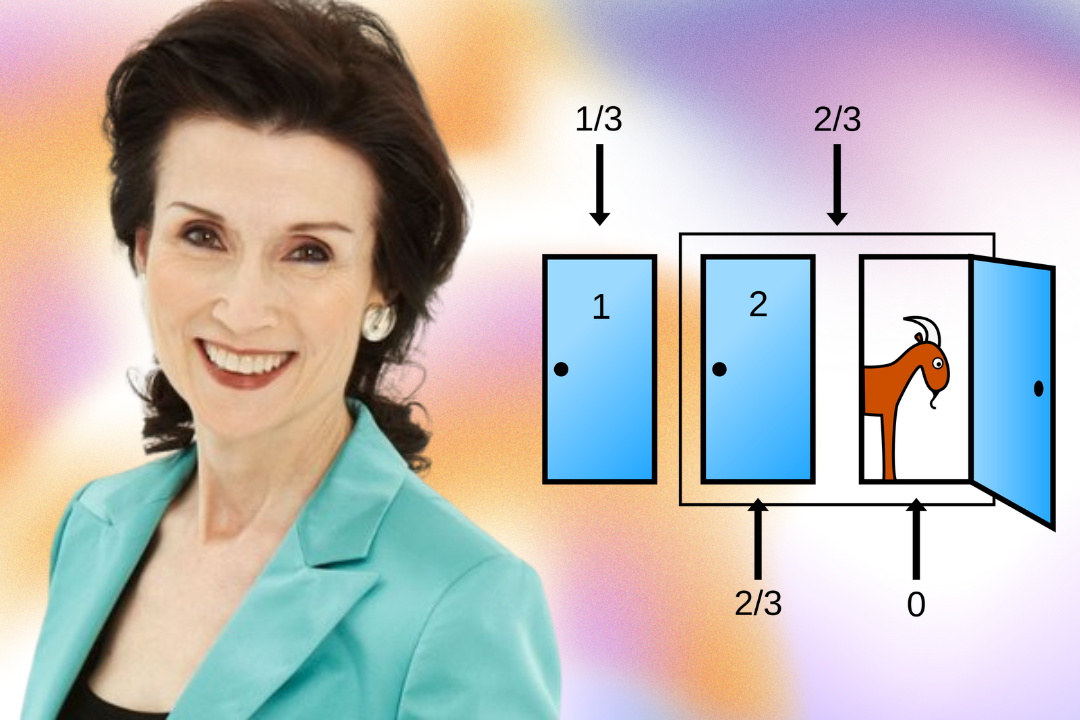
In a world where intelligence often equates to acclaim, one woman’s extraordinary IQ score—higher than those of Einstein, Stephen Hawking, and Elon Musk—should have made her a universal icon. Yet, despite setting a record that still stands unmatched, her correct answer to a seemingly straightforward question sparked an avalanche of ridicule that overshadowed her brilliance. This is the woman with the highest recorded IQ who, in spite of the fact, found herself at the center of a controversy that questioned more than just her intelligence. What was the question, and why did it provoke such outrage?
The Infamous Monty Hall Problem
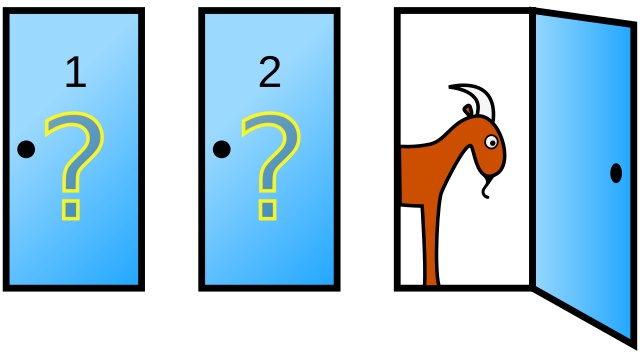
The Monty Hall Problem is one of the most fascinating riddles in the history of brainteasers. This mathematical puzzle, which takes its name from the host of the well-known game show “Let’s Make A Deal,” captures a situation that seems straightforward at first glance but is full of unexpected options.
Here’s the essence of the problem, as sent by a reader to the “Ask Marilyn” column in Parade in 1991:
“Suppose you’re on a game show, and you’re given the choice of three doors: Behind one door is a car; behind the others, goats. You pick a door, say No. 1, and the host, who knows what’s behind the other doors, opens another door, say No. 3, which has a goat. He then asks you, ‘Do you want to switch to door No. 2?’ Is it to your advantage to switch your choice?”
The roots of the problem trace back to its namesake, Monty Hall, and the game show dynamics where contestants faced similar choices, albeit without explicit reference to the underlying probabilities. The puzzle taps into fundamental aspects of probability and human psychology, where the correct choice defies our intuitive expectations.
The puzzle’s ongoing appeal stems from its defiance of common sense; although mathematical analysis shows that switching doors really doubles the likelihood of winning the car, intuition indicates that there is no benefit to doing so. Because of its illogical solution, the Monty Hall Problem is frequently discussed and examined in both scholarly and popular contexts.
A Woman’s Answer That Sparked a Firestorm of Ridicule
Marilyn Vos Savant, the woman behind the popular “Ask Marilyn” column, inadvertently ignited a firestorm with her straightforward response to the Monty Hall problem. When posed with the dilemma of whether to switch doors on a game show, she replied confidently: “Yes, you should switch. The first door has a 1/3 chance of winning the car, but the second has a 2/3 chance of winning the car.” This advice, however, did not sit well with a broad swath of her audience.
The backlash was quick and severe. Vos Savant’s column typically addressed a wide array of questions with crisp, clear logic, but this particular answer drew unprecedented ire. Over 10,000 letters poured in, many from incensed readers who vehemently disagreed with her logic. The criticism ranged from pedantic corrections to outright insults.
One particularly harsh letter stated, “You blew it, and you blew it big! Since you seem to have difficulty grasping the basic principle at work here, I’ll explain.”
Moreover, the controversy wasn’t limited to lay readers. A The New York Times article noted that among the disparaging responses, “close to 1,000 carried signatures with Ph.D.’s, and many were on letterheads of mathematics and science departments.”
“Your logic is in error, and I am sure you will receive many letters on this topic from high school and college students. Perhaps you should keep a few addresses for help with future columns,” read one letter from Georgia State University.
Another letter from Georgetown University said, “If you can admit your error you will have contributed constructively toward the solution of a deplorable situation. How many irate mathematicians are needed to get you to change your mind?”
A PhD doctor from the University of Michigan even invoked the Father of Modern Physics, saying, “Albert Einstein earned a dearer place in the hearts of people after he admitted his errors.”
This academic uproar reflected not just a misunderstanding of the problem’s underlying statistics but also deeper biases.
One letter even suggested a gendered difference in mathematical reasoning: “Maybe women look at math problems differently than men.” Another simply insulted her, proclaiming, “You are the goat!”
She Was Right All Along
The response Marilyn Vos Savant gave to the Monty Hall problem caused an uproar that necessitated not just one, but three follow-up columns to clarify her reasoning.
When initially presented with three doors, the chances of choosing the car were 1 in 3. After the host, who knows what’s behind each door, opens one to reveal a goat, the likelihood doesn’t split evenly between the remaining two doors as intuition might suggest. Instead, Vos Savant explained, “The winning odds of 1/3 on the first choice can’t go up to 1/2 just because the host opens a losing door.” Mapping out various scenarios reveals that switching doors indeed offers a two-thirds (66.6%) chance of winning, while sticking with the original choice gives only a one-third (33.3%) chance.
This counterintuitive outcome is better understood through a more exaggerated illustration. Imagine the game show presented you with 100 doors. You pick door #1, giving you a 1/100 chance of finding the car. The host then opens 98 other doors, all hiding goats, leaving just door #1 and another, say door #100. Although it might seem your odds have improved with fewer doors, the probability that the car is behind door #100 is now 99/100, significantly higher than the slim 1/100 chance that it remains behind your initial pick.
Monty Hall himself commented on the psychological aspects of the game, which further complicate player decisions. He noted that the more he offered contestants cash not to switch, the more convinced they became that their initial choice was correct—a psychological anchoring effect that clouded their judgment.
This cognitive dissonance—where new information (like the improved odds of switching doors) conflicts with existing beliefs (that each remaining door has equal probability)—explains much of the resistance to Vos Savant’s correct explanation. People tend to cling to their initial beliefs, even in the face of contradictory evidence, leading to widespread public and academic error.
Ultimately, computer simulations and classroom demonstrations across the country validated Vos Savant’s logic. Over time, the tide of opinion shifted dramatically: by the end of 1992, support among readers rose from 8% to 56%, and among academics from 35% to 71%.
Robert Sachs, a math professor who initially criticized Vos Savant, epitomized the changing attitudes when he later wrote to her, acknowledging his mistake: “After removing my foot from my mouth I’m now eating humble pie,” he admitted, vowing to personally respond to those he had led astray. “I vowed as penance to answer all the people who wrote to castigate me. It’s been an intense professional embarrassment.”
Getting to Know Marilyn Vos Savant

Marilyn Vos Savant, who gained widespread recognition not only for her prolific “Ask Marilyn” column but also for recording the highest IQ according to the Guinness Book of World Records, has been a subject of fascination and respect. Her IQ, reportedly higher than historical geniuses like Albert Einstein, Stephen Hawking, and contemporaries such as Elon Musk, places her in a unique position within the public and academic spheres.
Born in 1946 in St. Louis, Missouri, Vos Savant made headlines in the mid-1980s when her intellectual achievements were first publicized. Her exceptional cognitive abilities became the cornerstone for her weekly column in Parade magazine, where she solved complex mathematical problems and answered queries from readers about various subjects, demonstrating her broad range of knowledge and analytical prowess.
The Monty Hall problem brought her an unusual kind of celebrity, primarily due to the overwhelming flood of criticism following her counterintuitive but correct solution. Despite being correct, her response drew sharp rebukes from both the public and professionals in the fields of mathematics and science. The criticism was often harsh and personal, challenging her intellectual capacity and integrity. Yet, Vos Savant handled the situation with remarkable grace and patience.
In addressing the criticism, Vos Savant maintained a composed and educative tone, using the opportunity to further elucidate her reasoning in subsequent columns. Her responses were clear, methodical, and maintained a focus on educating her detractors, rather than defending her ego. She illustrated the principles of probability with simple, understandable examples, and invited readers to test the scenario themselves, promoting a deeper understanding of the problem.
Vos Savant’s demeanor during this period exemplified her grace in rational discourse and education. Rather than retreating or responding in kind to often vitriolic attacks, she continued to engage with her audience, patiently explaining and expanding on her reasoning and standing firm on her analysis. Her approach not only underscored her intellectual integrity but also highlighted her role as a public educator.
Beyond the Monty Hall controversy, Marilyn vos Savant has authored several books, imparting her wisdom on topics ranging from general intelligence to personal philosophy. Her work continues to inspire those who value intellect and reason, and her life remains a testament to the virtues of intelligence, patience, and resilience in the face of public scrutiny.
Inspiration From a Woman’s Triumph
Marilyn vos Savant’s encounter with the Monty Hall problem not only showed a fascinating statistical puzzle but also spotlighted deeper societal issues, such as the persistence of sexism and misogyny, even within educated and intellectual communities. The backlash she faced, steeped in gender bias, as evident from dismissive comments about “female logic” and overly personal critiques, underscored a troubling reality: intellectual arenas are not immune to the biases that pervade society at large.
Despite the storm of criticism, vos Savant navigated the controversy with remarkable grace and steadfastness, focusing on educating rather than retaliating. Her method of dealing with criticism—utilizing clarity to explain her reasoning and encouraging skeptics to test the problem themselves—transformed a contentious debate into a valuable teachable moment. This approach not only demonstrated the power of education in overcoming misinformation but also reinforced the importance of standing by one’s understanding and knowledge, even when faced with overwhelming opposition.
This goes to show that her story is a compelling chapter in the broader narrative of women in science and academia, offering inspiration and important lessons on resilience, clarity, and integrity in the pursuit of truth.
Featured image via @VirtualMvS on X
Awareness
If Facebook Isn’t Spying on Me, Why Did I Get Ads for What I Just Spoke About?

Imagine sitting with friends, chatting about your dream vacation to Bali. A few hours later, you scroll through Facebook and—bam!—ads for tropical resorts and yoga retreats flood your feed. Coincidence? Maybe. But it’s hard to shake the feeling that someone—or something—is listening.
This unsettling experience is so common it’s almost a digital urban legend: Facebook spying on your conversations through your phone’s microphone. Denials from tech giants haven’t silenced the whispers of suspicion, nor have they stopped the steady stream of eerily accurate ads. Is it possible that algorithms have grown so sophisticated they can predict our desires before we’ve even typed them out? Or is there something more invasive at play?
In an age where every click, swipe, and search is tracked, the line between coincidence and surveillance feels increasingly blurred. Are we paranoid—or justified in our concerns?
The Ubiquity of Creepy Ads

We’ve all experienced that eerie moment: you mention something in passing—a new gadget, a dream destination, or even a quirky hobby—and within hours, your social media feed is flooded with ads tailored to that exact topic. It feels as if someone is eavesdropping on your every word. Stories of these hyper-specific ad appearances have spread like wildfire, with countless anecdotes fueling suspicions that platforms like Facebook are secretly listening through our devices. While some dismiss these occurrences as mere coincidences, the uncanny accuracy of these ads makes the theory hard to ignore.
What’s particularly unsettling is the personal nature of these advertisements. They don’t feel like random suggestions but rather intimate recommendations perfectly aligned with your recent conversations. It’s one thing to receive ads based on your browsing history or recent online purchases, but when it seems tied to words spoken aloud, it touches a nerve. It’s an experience that feels invasive, raising unsettling questions about how much of our private lives is truly private. Are these moments proof of advanced technological surveillance, or is there a less sinister explanation?
Facebook’s Official Stance
Despite the widespread belief that Facebook is secretly eavesdropping on users, the company has consistently denied these allegations. Facebook executives have publicly stated that the platform does not use microphones to listen to conversations for advertising purposes. In fact, the company has repeatedly emphasized that such practices would not only violate its own policies but also be impractical given the vast scale of its operations. According to Facebook, the notion of live audio surveillance for ad targeting is not only unnecessary but also inefficient compared to their existing data-driven methods.
Rob Goldman, Facebook’s VP of Ads, has categorically stated, “We don’t use your microphone for ads. Just not true.” Furthermore, Facebook’s privacy policy outlines stringent controls over user permissions, giving users the power to manage which apps have access to their microphones and other data. However, these reassurances have done little to quiet the public’s skepticism. For many, the coincidence of seeing ads that perfectly match their spoken words feels too specific to be explained away, making it harder to accept the official narrative without question.
The Role of Data Tracking in Advertising
The unsettling truth about targeted ads lies not in microphones, but in the immense power of data tracking and predictive algorithms. Every action users take online—whether it’s a Google search, a website visit, or a social media like—feeds into a vast network of data collection. This information is meticulously analyzed by algorithms designed to predict your preferences and behaviors with uncanny accuracy.
Platforms like Facebook don’t need to listen to your conversations; they already know more about you than you might realize. Advanced algorithms work behind the scenes to connect the dots, using everything from your browsing history to your social media interactions to predict your interests. For instance, if you recently followed a travel page, Googled flights, or liked a friend’s vacation photo, the system might deduce that you’re planning a trip and start serving ads accordingly.
Moreover, companies rely on external data sources, such as third-party brokers, to create even more detailed profiles of their users. These data-sharing practices allow advertisers to target users with astonishing precision, crafting ads that feel personal and timely. What might seem like an invasion of privacy is often just the result of incredibly sophisticated data analytics working exactly as intended.
Psychological Bias and Perception
Even when ads feel like they’re listening, the real explanation might lie in the quirks of human psychology. People are naturally inclined to notice patterns, especially when something unexpected or unusual occurs. This tendency, known as confirmation bias, leads us to focus on instances where ads align with our conversations while overlooking all the unrelated ads we see daily. Over time, this selective attention creates the illusion that platforms are constantly spying on us.
Another factor at play is memory distortion. The human brain is notoriously unreliable when it comes to sequencing events. You might recall discussing a product before seeing an ad, but in reality, the ad may have appeared first, subtly influencing your conversation. Combined with algorithms that deliver eerily accurate predictions, these psychological effects can make it feel like social media platforms are reading your mind—or worse, listening to your private discussions.
It’s also worth noting that advertising systems are designed to anticipate your needs before you’re even aware of them. This predictive capability, while impressive, can come across as invasive. To the average user, the timing of these ads feels too perfect to be coincidental, adding fuel to the fire of surveillance fears.
Third-Party Apps and Data Sharing

While Facebook itself may not be listening, third-party apps and their data-sharing practices introduce another layer of complexity. Many apps collect vast amounts of user data, often through permissions that users agree to without a second thought. These permissions can include access to your location, browsing activity, and, in some cases, even your microphone. Once collected, this data doesn’t stay within the app—it’s often shared with advertisers or sold to third-party brokers.
The interconnected nature of digital ecosystems means that data collected by one app can be used to influence ad targeting on another platform. For example, if an app with microphone access detects specific keywords, that data could theoretically be passed on to advertising networks. While there’s little concrete evidence to prove this practice on a widespread scale, it highlights the murkiness of digital privacy and the potential risks of granting broad permissions to apps.
These practices reveal just how deeply intertwined our digital lives have become. Even if Facebook isn’t directly eavesdropping, the vast web of third-party data collection can create the illusion that it is, blurring the lines between reality and perception in the realm of targeted advertising.
The Ethical and Privacy Concerns
The debate over whether Facebook is spying underscores a much larger issue: the erosion of privacy in the digital age. Even if platforms aren’t actively listening, the sheer volume of personal data they collect and use for targeted advertising raises significant ethical questions. For many users, the realization that their online behavior is constantly monitored and monetized feels deeply invasive, even if it’s framed as a trade-off for free services.
This discomfort is compounded by the lack of transparency around how data is collected, shared, and used. While privacy policies outline these practices, the language is often so complex that most users don’t fully understand what they’re agreeing to. This dynamic creates an imbalance of power, where corporations wield enormous influence over personal information with minimal accountability.
Governments and advocacy groups are increasingly calling for stricter regulations on data collection and greater transparency from tech companies. However, progress has been slow, leaving users to grapple with the ethical implications of living in a data-driven world. The real question isn’t just whether platforms are spying—it’s how much control we have over our own digital identities and how far companies should be allowed to go in the pursuit of profit.
Are We Truly Being Spied On?
The uncanny precision of targeted ads often feels like undeniable proof that platforms like Facebook are listening to our conversations. However, the reality is less cloak-and-dagger and more algorithmic wizardry. These platforms don’t need to spy; they rely on the data we freely or unknowingly provide. Every click, search, and app interaction feeds sophisticated algorithms that predict our desires with astonishing accuracy.
What’s truly unsettling isn’t the possibility of microphones picking up our voices but the vast scale of data collection happening behind the scenes. From location pings to browsing habits, a sprawling network of apps, data brokers, and advertising systems harvests and monetizes our digital lives—often without our explicit consent. This system, though driven by impersonal algorithms, feels deeply personal and invasive.
The real issue isn’t whether Facebook is directly spying on us but how much control we’ve ceded in exchange for convenience. The targeted ads we see are a stark reminder of the trade-offs we’ve made in a world increasingly shaped by data capitalism.
Awareness
7-year-old girl dies after being buried alive in a sand hole she was digging at the beach

Beaches are a beloved destination for families seeking relaxation and fun, but beneath the sun-soaked sands can lurk unexpected dangers. For the Mattingly family, a rare vacation to Florida turned into an unimaginable tragedy when a seemingly innocent activity ended in heartbreak. The story of 7-year-old Sloan Mattingly has since captured the nation’s attention, shedding light on a hazard many don’t realize exists.
As we explore what happened that fateful day, this narrative uncovers not just the events, but also the profound impact it has had on Sloan’s family—and the important lessons it holds for anyone planning a trip to the beach.
A Family Vacation Turns Tragic
In February 2024, the Mattingly family from Indiana embarked on a rare vacation to Lauderdale-by-the-Sea, Florida—a much-anticipated break from their routine. Seven-year-old Sloan and her nine-year-old brother, Maddox, were brimming with excitement as they explored the sandy shores. Their parents, Jason and Therese, looked on, cherishing these precious family moments.
On February 20, the children engaged in a classic beach pastime: digging a hole in the sand. Unbeknownst to them, this innocent activity harbored hidden dangers. As they dug deeper, the walls of the hole became unstable. Without warning, the sand collapsed, trapping both children beneath its weight. Maddox was buried up to his chest, while Sloan was completely submerged.
Their parents sprang into action, desperately trying to rescue their children. Jason recounted the frantic moments: “It was kind of a blur… it just happened so fast. In my mind I had her in my hands, but the weight of the sand was too much.”
Beachgoers rushed to assist, and emergency services were called. Maddox was freed first, but Sloan remained trapped for over 15 minutes. Despite the valiant efforts of rescuers, she was unresponsive when finally extricated and was later pronounced dead at Broward Health Medical Center.
This heartbreaking incident underscores a peril that many beach visitors overlook: the potential for sand holes to collapse, leading to suffocation. Studies have shown that such accidents, though rare, can be fatal. A 2007 study published in the New England Journal of Medicine documented 52 cases of sand hole collapses over a 10-year period in the U.S., resulting in 31 deaths.
The tragedy of Sloan Mattingly serves as a poignant reminder of the unforeseen dangers that can arise during seemingly harmless beach activities. It calls for increased awareness and caution to prevent such devastating accidents in the future.
Frantic 911 Calls
As the sand collapsed around Sloan and Maddox, panic ensued on the beach. Bystanders and the children’s parents urgently dialed 911, their voices filled with desperation. In the released emergency call recordings, one caller can be heard saying, “The father started yelling for help. He said his child is caught in a hole in the sand they were digging. The mom is yelling the daughter is in there.”
Background screams and cries underscored the chaos, with another caller describing, “There is a little girl buried under the sand and we cannot see her.”
These harrowing calls paint a vivid picture of the frantic efforts to save the children, capturing the urgency and fear that gripped everyone present.

Rescue Efforts
As the sand engulfed Sloan and Maddox, immediate action was crucial. Beachgoers and the children’s father, Jason Mattingly, sprang into action, desperately digging to free the trapped siblings. Witness Harry Defina recounted the scene: “I could see the boy a little bit, but all I can see… was the top of the girl’s head. I saw the father was just beside himself.”
Emergency responders arrived swiftly. Pompano Beach Fire-Rescue crews utilized shovels and support boards to stabilize the collapsing sand as they worked to extricate the children. Despite their rapid response, Sloan remained buried for approximately 20 minutes before being freed. She was unresponsive upon extraction and was immediately transported to Broward Health Medical Center. Tragically, she was pronounced dead at the hospital.
Maddox, who was buried up to his chest, was rescued and hospitalized in stable condition. The swift actions of bystanders and rescue teams were commendable, but the unpredictable nature of sand collapses posed significant challenges, underscoring the inherent dangers of such incidents.
Outcome of the Rescue
Despite the valiant efforts of rescuers and bystanders, the outcome was devastating. Maddox, who had been buried up to his chest, was successfully freed and transported to a local hospital in stable condition. Tragically, Sloan, who had been completely submerged under the sand, was unresponsive upon rescue. She was rushed to Broward Health Medical Center, where, despite exhaustive medical efforts, she was pronounced dead.
The sudden loss of Sloan left her family and the community in profound grief. Her mother, Therese, poignantly expressed, “A freak accident happened yesterday while we are here on vacation and it took away our greatest 7.5 years.”
This heartbreaking incident underscores the unpredictable dangers that can arise from seemingly innocent activities, casting a somber shadow over what was intended to be a joyful family vacation.
Investigation Underway
Following the tragic incident, authorities initiated a comprehensive investigation to understand the circumstances leading to Sloan Mattingly’s death. The Broward County Sheriff’s Office (BSO) confirmed that the children were digging a hole in the sand when it collapsed, trapping them. Detectives noted that the family was on vacation from Indiana at the time.
Initial reports suggested that the hole was approximately five to six feet deep. However, a BSO deputy later clarified that the hole was only about three feet deep. Additionally, rumors circulated that another individual had dug the hole prior to the children’s involvement. BSO addressed these claims, stating, “At this time, they have no evidence that suggests a man dug the sand hole where the children were trapped prior to the incident.”
The investigation remains active, with authorities reviewing all available evidence, including video footage of the incident. BSO emphasized that the circumstances surrounding the case are still under scrutiny, aiming to provide a clear understanding of the events that led to this heartbreaking accident.
Risks of Sand Collapses
While building sandcastles and digging holes are cherished beach activities, they can pose significant, often underestimated, dangers. The tragic incident involving Sloan Mattingly underscores the potential hazards associated with sand collapses.
Understanding Sand Instability
Sand may appear stable, but its structural integrity is deceptive. Dry sand can only maintain a slope of approximately 33 degrees; when this angle is exceeded, or when additional weight is applied near the edge, the sand becomes prone to sudden collapse. Stephen Leatherman, a professor at Florida International University, explains, “Dry sand can only hold a 33-degree angle, and people dig these holes almost vertically.”
Statistics Highlighting the Danger
Between 1997 and 2007, the United States recorded 52 incidents of individuals being submerged due to collapsing sand holes, resulting in 31 fatalities. The victims ranged from 3 to 21 years old, with holes typically measuring between 2 to 15 feet in diameter and 2 to 12 feet in depth.
Challenges in Rescue Operations
Rescuing individuals trapped in collapsed sand holes is fraught with difficulties. The unstable nature of sand means that attempts to dig out victims can lead to further collapses, complicating rescue efforts. Moreover, the weight of the sand can cause suffocation within minutes, leaving a very narrow window for successful rescue.
Staying Safe at the Beach: Essential Tips
Enjoying a day at the beach is a cherished pastime, but it’s crucial to be aware of potential hazards to ensure a safe experience. The tragic incident involving Sloan Mattingly underscores the importance of understanding and mitigating risks associated with common beach activities.
1. Limit the Depth of Sand Holes
- Keep Holes Shallow: Avoid digging holes deeper than the knees of the shortest person in your group. Deeper holes are more prone to sudden collapses, posing significant risks. Experts recommend not exceeding a depth of two feet.
2. Supervise Children Closely
- Active Monitoring: Always keep a watchful eye on children as they play, especially when they’re digging or tunneling in the sand. Immediate adult supervision can prevent accidents before they occur.
3. Fill Holes Before Leaving
- Restore the Beach Surface: Before departing, ensure all holes are completely filled in. Unfilled holes can be hazardous to other beachgoers and can destabilize surrounding sand.
4. Recognize Unstable Sand Conditions
- Assess the Environment: Be cautious of areas with dry, loose sand or spots recently disturbed by tides or construction. These conditions can lead to unexpected collapses.
5. Educate Your Group
- Spread Awareness: Discuss the dangers of deep sand holes with family and friends. Awareness is a critical step in preventing accidents.
6. Be Prepared to Act
- Emergency Response: If someone becomes trapped, call emergency services immediately. Attempt to remove sand from around the victim’s head and chest to facilitate breathing, but avoid causing further collapses.
Lifeguard Presence and Family Response
The Role of Lifeguards in Preventing Tragedies
The absence of lifeguards on Lauderdale-by-the-Sea beach during the incident involving Sloan and Maddox Mattingly has raised significant concerns. Experts assert that trained lifeguards could have identified and mitigated the dangers associated with digging deep sand holes. Tom Gill, a spokesperson for the U.S. Life Saving Association, emphasized, “Every USLA lifeguard…is going to know about the dangers of sand collapse and they are going to warn people immediately upon seeing that.”
Lauderdale-by-the-Sea does not employ lifeguards on its beaches, a decision now under scrutiny. In response to the tragedy, town commissioners convened to discuss the potential implementation of lifeguard services and the establishment of safety ordinances. Commissioner Theo Poulopoulos expressed his concern, stating, “I feel a tremendous amount of guilt over this little girl’s death…I’m sitting here saying let’s do it.”
Family’s Heartfelt Response
The Mattingly family has been profoundly affected by the loss of Sloan. Her mother, Therese, described the incident as a “freak accident” and reflected on Sloan’s impact, saying, “We experienced the purest human being and we are forever changed by her.”
Sloan’s father, Jason, shared his grief on social media, writing, “Our baby is in heaven, love you too much Sloan.”

Sloan’s Story as a Lifesaving Lesson
The heartbreaking loss of 7-year-old Sloan Mattingly serves as a poignant reminder of the unforeseen dangers that can lurk beneath the surface of seemingly innocent beach activities. As her family grapples with the profound void left by her absence, they channel their grief into advocacy, striving to ensure that no other family endures a similar tragedy.
Their mission underscores a critical message: while beaches offer joy and relaxation, they also demand our respect and vigilance. By adhering to safety guidelines, educating ourselves and others, and fostering a community of awareness, we can transform our shores into safer havens for all.
As we honor Sloan’s memory, let her story inspire a collective commitment to beach safety, ensuring that future generations can enjoy the sun and sand without peril.
Awareness
He’s Been in Foster Care for Most of His Life. At 13, All Tim Wants Is a Chance to Be Someone’s Son.

For most of us, the idea of family is a given—something we don’t often question or even think twice about. But for Tim, a 13-year-old boy who has spent nearly his entire life in foster care, family is a dream he has been chasing for a decade. His story isn’t just about longing; it’s about survival in a system that has yet to offer him the stability and love he craves.
Tim’s heartfelt plea is both simple and profound: he wants a chance to be someone’s son. Featured on Wednesday’s Child, a program highlighting children in need of adoption, Tim’s words carried the weight of years spent navigating uncertainty. His message was clear—a loving home isn’t just something he desires; it’s the freedom he’s never known.
Lost in the System: A Decade Without Roots
Tim entered foster care at just three years old, and in the decade since, he’s experienced an endless cycle of temporary placements. Now 13, he lives in a residential treatment center, a space that offers structure but little of the love and connection he craves. Each move feels like starting over, leaving Tim without a sense of stability or belonging.
To Tim, foster care feels like “a prison without walls,” a poignant metaphor that captures his reality. He explains how running away is futile when there’s nowhere to go, no family to run toward. This endless uncertainty has taken a toll, robbing him of restful nights and dimming the bright blue eyes that once shone with childhood innocence. Every placement reminds him of what’s missing—a home where he feels safe, wanted, and loved.
Despite everything, Tim hasn’t lost hope. He longs for adoption not just as an escape from the system, but as a chance to find something he’s never had: a family who will love him unconditionally. For Tim, being someone’s son isn’t just a dream—it’s the key to a life where he can finally put down roots and simply be a kid.
A Public Plea for Belonging
Tim’s story caught the attention of Wednesday’s Child, a program dedicated to helping foster children find permanent homes. In an extraordinary effort, his caseworker arranged for him to travel across the state to appear on the Dallas-based show. It was a rare opportunity for Tim to share his story with the hope that someone, somewhere, might see the boy behind the headlines and offer him the family he dreams of.
During his segment, Tim spoke with striking honesty about his longing for a home. “At home, I am an angel. Perfect,” he said, his voice carrying a mix of hope and exhaustion. He’s tired of the instability and the constant feeling of being unwanted. His caseworker shared a photo of him at seven years old, a time when his big blue eyes radiated curiosity and optimism. Now, years later, those same eyes reflect the toll of waiting too long for something as simple—and as profound—as love.
His plea was clear and heartbreakingly simple: Tim wants to be someone’s son. A family to him isn’t just about a roof over his head; it’s about trust, consistency, and the freedom to grow without fear of abandonment. With each word, Tim’s vulnerability shone through, leaving little doubt about the life-changing power of a loving home.
What Family Means to Tim

For Tim, family isn’t just a comforting idea—it’s the missing piece of his life. He dreams of a mother who cares deeply, someone who worries about him and always checks in. “Someone that cares, who’s always worried. I may seem embarrassed sometimes (by her worrying) but she’ll still be wondering if I’m OK. She’ll ask how my day is every time I walk through the door,” Tim said, describing the kind of connection he yearns for.
In a father, Tim imagines a hero, someone who can guide him and provide a sense of normalcy. “If I go outside, he’ll go outside with me. He’ll give me some normalcy,” he said, his voice revealing both hope and determination. Tim longs for a father figure who will not only teach him about life but also show him what it means to feel safe and supported.
Tim also dreams of having siblings—brothers or sisters to laugh with, learn from, and share his life. “Kind of gets boring playing by yourself,” he admitted with a small smile. To him, siblings would mean connection and companionship, a chance to be part of something larger than himself. For Tim, family isn’t just about people; it’s about trust, stability, and the freedom to finally belong.
The True Freedom of Being Someone’s Son

For Tim, adoption isn’t just about finding a home—it’s about reclaiming a sense of freedom he’s never truly known. “Freedom. Freedom to go out the door when I want and them not worrying about me coming back or not, because they know they can trust me,” he said, describing what having a family would mean to him. For a boy who has spent most of his life in the structured confines of foster care, freedom isn’t just physical—it’s emotional.
Currently, Tim’s life is shaped by rules and routines, often dictated by his placements in foster care. He explains that this rigid environment leaves little room for trust, both given and received. Adoption, to him, symbolizes the chance to escape that cycle. It’s not just about being free to explore the world, but also about being free to grow into himself without fear of rejection or uncertainty.
With a family, Tim imagines a life where trust is mutual and unconditional. It’s about knowing that his worth isn’t tied to how long he stays in one place but to the love and acceptance he receives. For Tim, being someone’s son is about far more than belonging—it’s about finally being free to just be a kid.
A Family’s Power to Rewrite a Life
Tim’s story isn’t just about a boy waiting for adoption—it’s a reminder of the resilience it takes to keep hoping after years of uncertainty. For Tim, the dream of a family isn’t about luxury or grand gestures. It’s about the little things: a mother who asks how his day went, a father who teaches him life lessons, and siblings to share laughter and companionship. These aren’t just wishes—they’re his vision of freedom.
“Freedom. Freedom to go out the door when I want and them not worrying about me coming back or not, because they know they can trust me,” Tim said, his words carrying the weight of someone who has spent too long without stability. For him, being someone’s son means more than just a roof over his head—it’s the chance to feel safe, valued, and truly seen for who he is.
A family has the power to give Tim more than a home—it can give him a future filled with possibility. It’s not just about providing stability; it’s about showing him that love and trust are things he can count on. For Tim, having a family would mean finally belonging, not just to a household but to a life where he can grow, thrive, and dream without limits.
Awareness
20 Early Signs Your Body is Fighting Cancer

The human body is an extraordinary machine, constantly working to maintain balance and protect itself from harm. However, when something as serious as cancer begins to develop, the body often sends subtle warning signals long before the disease progresses. These signals can be easy to dismiss—after all, who hasn’t felt unusually tired or experienced a minor ache and chalked it up to stress or aging? Yet, these seemingly insignificant changes can sometimes indicate that your body is fighting something far more serious.
Cancer, in its early stages, can often be silent, with symptoms that mimic everyday ailments. This is why awareness is so critical. Spotting early warning signs doesn’t just increase the chances of catching cancer before it spreads—it can also make treatment more effective and improve survival rates significantly. While not every symptom is a definitive sign of cancer, certain patterns or persistent issues deserve closer attention. Understanding these clues is a vital step in advocating for your health.
1. Unexplained Weight Loss
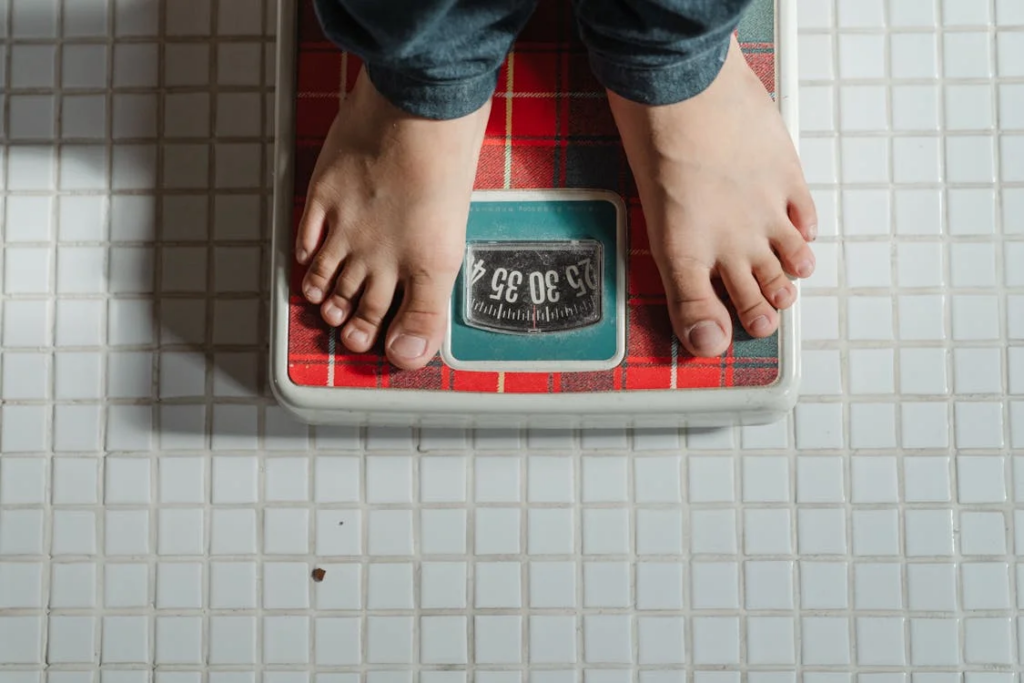
Shedding a few pounds without trying might seem like a welcome surprise, but it could also be one of the first signs your body is fighting cancer. Sudden and unexplained weight loss—typically defined as losing 10 pounds or more within a short period—can be caused by changes in your body’s metabolism. Cancer cells can hijack the body’s energy supply, causing a rapid breakdown of fat and muscle tissue. This process often goes unnoticed until the weight loss becomes significant.
Certain cancers are more commonly associated with this symptom, particularly those affecting the stomach, pancreas, lungs, or esophagus. For instance, pancreatic cancer can interfere with your body’s ability to digest nutrients, while stomach cancer may lead to a loss of appetite or difficulty eating. Lung cancer, on the other hand, may disrupt metabolic processes that lead to sudden weight changes.
It’s important to note that weight loss can happen for many reasons, including stress, changes in diet, or other health conditions. However, if the weight loss is rapid, persistent, and unaccompanied by changes in your lifestyle, it’s essential to consult a doctor. Catching this symptom early can help identify potential underlying issues, including the possibility of cancer, before it progresses further.
2. Persistent Fatigue
Everyone feels tired now and then, but cancer-related fatigue is different. This type of exhaustion doesn’t go away with rest and often feels overwhelming. Persistent fatigue can be caused by cancer cells draining the body’s energy or by the immune system working overtime to fight off the disease. This symptom is especially common in cancers like leukemia, where the body is actively battling abnormal blood cells, or colon and stomach cancers, which can cause internal bleeding and anemia.
The key distinction here is that this fatigue is unrelenting. It might feel like a heaviness in your body or an inability to focus or perform daily tasks. While fatigue is common in everyday life, when it persists without explanation and disrupts your normal routine, it’s worth getting checked out. Catching the cause early could uncover a hidden condition, including cancer.
3. Changes in Skin Appearance
The skin is one of the first areas of the body to show signs of internal issues, including cancer. Changes like yellowing (jaundice), darkening, redness, or a persistent rash can indicate something deeper is at play. For instance, jaundice is often linked to pancreatic cancer, while itchy, scaly patches might be associated with certain types of lymphoma.
Non-healing sores, particularly in sun-exposed areas, are another warning sign and could point to skin cancers like melanoma, basal cell carcinoma, or squamous cell carcinoma. Be especially cautious of new moles or changes to existing ones—such as irregular borders, multiple colors, or sudden growth—as these could indicate melanoma. Paying attention to these changes and seeking medical advice promptly can make a crucial difference.
4. Unusual Bleeding
Unexpected bleeding, whether it’s in the stool, urine, or from coughing, is a symptom that should never be ignored. Different types of cancers can lead to unusual bleeding. For example, colorectal cancer can cause blood in the stool, while bladder or kidney cancer might show up as blood in the urine. Persistent coughing with blood may indicate lung or throat cancer.
Sometimes, unusual bleeding is internal and not immediately noticeable, but symptoms like anemia, fatigue, or dark, tarry stools can point to hidden blood loss. If you notice any form of abnormal bleeding, even if it seems minor, seek medical attention. Early diagnosis can prevent further complications.
5. Persistent Cough or Hoarseness
A cough that won’t go away or a hoarse voice lasting for weeks might be linked to lung, throat, or thyroid cancer. Unlike a cold or seasonal allergies, cancer-related coughs are often dry and persistent. You may also notice blood-tinged phlegm, which should raise immediate concern.
Hoarseness, especially when accompanied by difficulty swallowing or persistent throat discomfort, could indicate cancer in the larynx or esophagus. These symptoms often overlap with other common conditions, so their persistence is a key warning sign to pay attention to.
6. Lumps or Swellings

Finding a lump or swelling in any part of your body—whether it’s the breast, neck, armpit, or groin—should prompt further investigation. These lumps could represent swollen lymph nodes, a common early sign of lymphoma or leukemia. In the breast, a lump could indicate breast cancer, particularly if it feels hard, immovable, and irregular in shape.
While not all lumps are cancerous, the texture, size, and location can provide critical clues. Regular self-examinations are vital for catching abnormalities early, as these growths are often painless in the early stages of cancer.
7. Changes in Bowel or Bladder Habits
Alterations in bathroom routines, such as chronic diarrhea, constipation, or blood in the stool, could signal colorectal cancer. Similarly, frequent urination, pain while urinating, or blood in the urine might indicate bladder or prostate cancer.
Sometimes, these changes occur gradually, making them easy to dismiss. However, persistent symptoms, especially when combined with pain or visible changes, should be assessed by a healthcare provider. Routine screenings like colonoscopies can be life-saving in catching these cancers early.
8. Difficulty Swallowing or Persistent Indigestion
Trouble swallowing or a constant feeling of food getting stuck in your throat could be linked to cancers of the esophagus or throat. Persistent indigestion or a burning sensation in the chest may point to stomach or gastrointestinal cancers.
While these symptoms can also be caused by conditions like acid reflux, the key difference is their persistence despite lifestyle changes or over-the-counter treatments. If eating becomes painful or you start avoiding certain foods due to discomfort, it’s time to seek medical advice.
9. Pain That Doesn’t Go Away

Pain that lingers without a clear cause is often the body’s way of signaling a problem. Persistent back pain, for example, may be linked to pancreatic or kidney cancer, while ongoing headaches might suggest a brain tumor. Bone pain, especially in the arms, legs, or pelvis, can be a symptom of bone cancer.
The nature of cancer-related pain is often deep, aching, and unrelieved by typical painkillers. If you’ve tried managing chronic pain without success, consult a doctor to rule out any underlying conditions, including cancer.
10. Fever Without Infection
A persistent fever with no obvious cause—such as a cold, flu, or other infection—can be an early sign of blood cancers like leukemia or lymphoma. Cancer-related fevers often occur at night and may be accompanied by chills or sweats.
While fever is the body’s natural response to fighting illness, its presence without a clear explanation should be taken seriously. It might indicate the immune system is battling something more severe, such as cancer.
11. Mouth Sores or White Patches
Sores in the mouth that don’t heal after a few weeks or white patches on the gums or tongue could be symptoms of oral cancer. This is especially common in smokers, heavy drinkers, or individuals with a history of chewing tobacco use.
Painful or persistent mouth sores, especially when accompanied by difficulty swallowing or jaw stiffness, should prompt immediate evaluation. Oral cancer, when detected early, is highly treatable.
12. Night Sweats

Waking up drenched in sweat, even in cool temperatures, could signal certain types of cancers, such as lymphoma. Night sweats associated with cancer are typically more severe than those caused by hormonal changes or common illnesses. They often occur alongside fever or unexplained weight loss, making them a symptom that should not be ignored.
13. Unexplained Swelling in the Face or Neck
Swelling in the face or neck could be a sign of a tumor pressing against blood vessels, reducing blood flow. This symptom is often linked to cancers of the lungs or chest, where growths can obstruct major veins. While swelling might seem minor at first, its persistence or recurrence warrants medical evaluation.
14. Frequent Infections
Cancers such as leukemia and lymphoma weaken the immune system, making the body more susceptible to frequent or lingering infections. If you find yourself constantly battling colds, respiratory issues, or other infections that seem unusually severe or long-lasting, it may indicate an underlying condition affecting immune function.
15. Changes in Nails

Unusual changes in your nails can be an early cancer indicator. Dark streaks or spots under the nails may point to skin cancer, while excessively pale or white nails could be linked to liver issues or anemia, sometimes associated with underlying cancers. Clubbing of the fingers—where the tips enlarge and nails curve downward—can signal lung cancer.
16. Persistent Bloating
Persistent bloating, especially in women, is often associated with ovarian cancer. Unlike typical bloating that fluctuates, cancer-related bloating tends to be constant and accompanied by other symptoms like pelvic pain or changes in appetite. Men may experience similar issues if gastrointestinal cancers are present.
17. Persistent Headaches
Chronic headaches that don’t respond to over-the-counter medication could be a symptom of a brain tumor. These headaches often worsen over time and may be accompanied by nausea, vision changes, or difficulty focusing. While not all headaches are linked to cancer, their persistence and severity should be monitored.
18. Vision Change
Blurred vision, double vision, or sudden vision loss can indicate certain types of cancers, particularly brain or eye cancer. These changes often occur due to tumors pressing on nerves or interfering with the brain’s visual processing centers.
19. Persistent Itchiness

Chronic, unexplained itching might be more than just a skin condition. Certain cancers, like lymphoma or liver cancer, can cause systemic itching due to the release of chemical compounds in the bloodstream. This itching is often intense and doesn’t respond to typical treatments.
20. Difficulty Breathing or Chest Pain
Shortness of breath, chest pain, or wheezing can be an early sign of lung cancer or cancer that has spread to the chest cavity. These symptoms may also occur if tumors press against airways or blood vessels. Persistent respiratory discomfort, particularly if it worsens over time, is a clear signal to seek medical advice.
Stay Vigilant, Stay Empowered
Cancer doesn’t always shout; often, it whispers through subtle, persistent symptoms that are easy to dismiss. By tuning into your body and recognizing these warning signs early, you’re taking a crucial step toward protecting your health. Awareness is the first line of defense, and knowledge empowers you to act swiftly when something feels off.
Remember, not every unusual symptom is a sign of cancer, but persistence and patterns matter. If you’ve noticed unexplained changes—whether it’s weight loss, fatigue, or something as simple as skin discoloration—don’t ignore them. Trust your instincts and consult a healthcare professional. Early intervention saves lives, and what might seem like a minor concern could hold the key to catching a condition early.
Your health is your greatest asset, and staying informed is the best way to safeguard it. By understanding these early signs and advocating for yourself, you’re not just reacting—you’re taking charge. Pay attention, ask questions, and don’t hesitate to seek answers. When it comes to your well-being, every moment counts.
Ancient History
The Strangest Yet Most Common Superstitions From Around the World

Superstitions are like hidden threads woven into the fabric of cultures around the world. They may seem strange, quirky, or downright bizarre, yet they offer a fascinating glimpse into the fears and hopes that people have carried for centuries. From ancient rituals to unusual habits passed down through generations, these beliefs are more than just old wives’ tales—they reveal how deeply tradition influences everyday life, even in the modern world.
Why do people still avoid walking under ladders, refuse to open umbrellas indoors, or cringe at the sight of black cats? These customs may seem arbitrary, but each one holds a piece of cultural history, rooted in stories of protection, fortune, and misfortune. In fact, many superstitions developed from practical beliefs, such as the need to ward off evil spirits or protect one’s family from harm. Passed along through generations, they remain as curious yet persistent elements in everyday life.
Europe’s Old Wives’ Tales and Fears of the Unknown

Europe, with its deep-rooted history and folklore, is a treasure trove of superstitions. These traditions reveal much about the continent’s collective fears and hopes, many of which have been passed down over generations. While some superstitions may seem like playful quirks, others reflect age-old concerns about fate, safety, and luck.
- Birthday Wishes in Germany – In Germany, wishing someone a happy birthday before the actual day is considered bad luck. This belief comes from the idea that demons or evil spirits could hear the early wishes and try to prevent them from happening.
- Eye Contact When Toasting – Germans also believe it’s essential to make eye contact when clinking glasses during a toast. This custom originates from historical concerns about poisoning and is said to prevent seven years of romantic misfortune if ignored.
- Greeting a Lone Magpie in Great Britain – In the UK, it’s common to greet a lone magpie with, “Good morning, Mr. Magpie. How is your lady wife today?” Because magpies are often seen in pairs, a solitary magpie is seen as a symbol of sorrow. The greeting is thought to ward off bad luck associated with seeing a lone magpie.
These customs, while unique to each culture, echo universal themes of respect for unseen forces and the desire to shape one’s own fortune. From avoiding early birthday wishes to greeting lone magpies, European superstitions are enduring reminders of the continent’s fascinating cultural heritage.
Latin American Beliefs: Rituals and Symbolism in Everyday Life

In Latin America, superstitions are a blend of indigenous traditions and colonial influences, creating a rich tapestry of beliefs aimed at offering protection and balancing luck and misfortune. These superstitions reveal how intertwined cultural heritage and spiritual practices are in everyday life.
- Crossing Oneself When Passing a Graveyard in Brazil – In Brazil, it’s customary to make the sign of the cross when passing a graveyard. This gesture, adopted from European Christian customs, is believed to protect against bad spirits or misfortune.
- Avoiding Pointing at Stars – Another Brazilian superstition warns against pointing at stars, as it’s thought to bring misfortune in the form of warts, particularly on children’s fingers. This belief has its roots in indigenous traditions, where stars were seen as symbols deserving of respect.
- Tuesday the 13th in Spain – Unlike the widely known Friday the 13th, in Spain, Tuesday the 13th is considered an unlucky day. Linked to Mars, the god of war, it’s seen as a day to avoid major events, such as weddings or travel. The superstition is so prevalent that some Spanish buildings skip the 13th floor altogether.
These beliefs, shaped by local traditions and religious symbolism, continue to influence Latin American culture. They demonstrate a strong sense of reverence for forces beyond one’s control and a belief in taking steps to ensure safety and fortune.
Asian Superstitions: Spirits, Numbers, and Symbolism
Across Asia, superstitions often reflect a deep spiritual connection to ancestors and beliefs in the power of numbers, colors, and actions to influence fortune. These customs highlight the region’s unique way of interpreting and respecting unseen forces.
- Avoiding the Number 4 in Japan – In Japan, the number 4 is avoided because it’s pronounced similarly to the word for “death” (shi). As a result, the number is often skipped in hospital rooms, apartment floors, and even gift sets to avoid associations with bad luck. The number 9 is also shunned, as its pronunciation (ku) sounds like the word for suffering or torture.
- Whistling at Night in South Korea – In South Korea, whistling at night is believed to attract ghosts and malicious spirits. This superstition likely comes from the association of nighttime sounds with summoning unwanted forces.
- Writing Names in Red Ink – In South Korea, writing someone’s name in red ink is highly taboo. Red is traditionally used for names on graves and tombstones, so writing a living person’s name in red is seen as inviting misfortune or death upon them.
These superstitions continue to shape everyday behavior in Asia, where respect for spiritual traditions runs deep. They serve as reminders to honor cultural beliefs about fortune and to navigate life cautiously.
The Middle Eastern and Eastern European Perspectives on Curses and Protection
In the Middle East and Eastern Europe, many superstitions focus on protection and respect for the dead. These beliefs, passed down through generations, reveal a shared cultural emphasis on safeguarding oneself and honoring spirits.
- Handing Sharp Objects in Turkey – In Turkey, it’s believed that handing someone a knife or scissors directly may lead to conflict or even enmity. Instead, people place these items on a surface rather than passing them hand-to-hand, as sharp objects symbolize division and the severing of relationships.
- Planting Fig Trees as a Curse – Another Turkish superstition holds that planting a fig tree outside someone’s home is a curse, believed to bring bad fortune to the household. The fig tree is thought to symbolize unwelcome intrusion and disruption.
- Delaying Funerals in Poland – In Poland, it’s thought that delaying a funeral past the following Sunday may bring about another death in the family. This belief underscores the importance of prompt respect for the deceased and is rooted in a fear of misfortune resulting from neglect.
- Returning for Forgotten Items in Russia – In Russia, going back for something forgotten after leaving the house is seen as bad luck unless you look in a mirror before leaving again. This action is thought to confuse lurking spirits, preventing them from following you out and bringing misfortune.
These superstitions reflect a deep cultural respect for protective customs and beliefs about unseen forces, serving as both practical and symbolic ways to ensure well-being and harmony.
A Modern Take on Superstitions: Cultural Relevance in a Globalized World
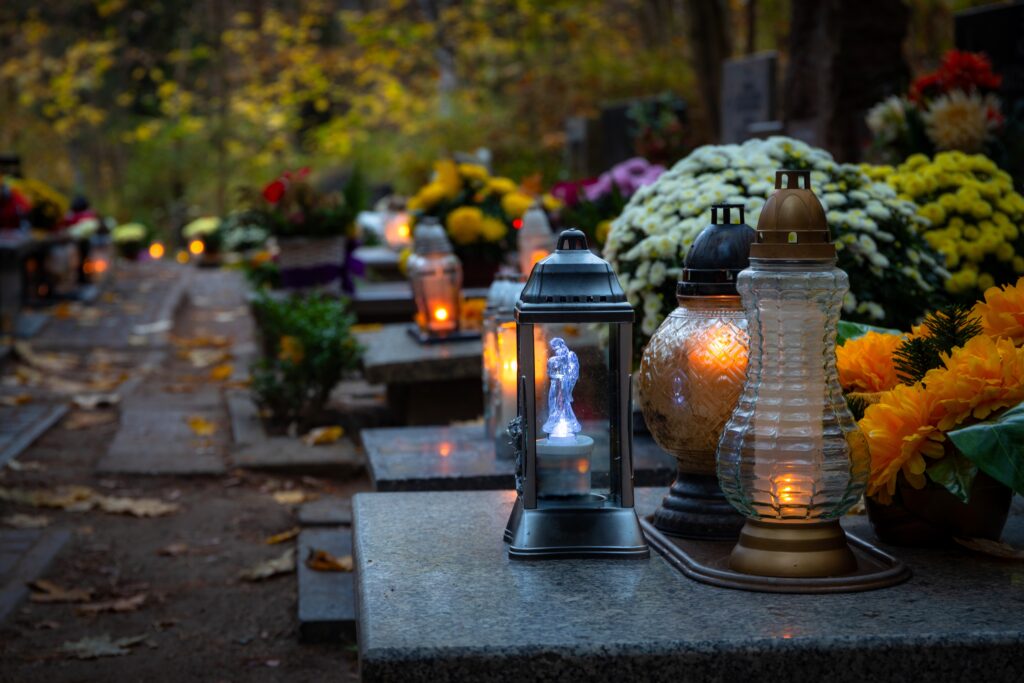
In today’s world, superstitions continue to fascinate and often thrive, despite modern advancements and a general move toward scientific reasoning. Interestingly, globalization has spread and transformed these beliefs, making them accessible to people from different backgrounds who find them both intriguing and strangely relatable.
Even with widespread education and technological development, superstitions still offer comfort to people, acting as rituals that give a sense of control over uncertain situations. This is especially true in global cities where diverse cultures intersect, bringing their unique superstitions along. For instance, tourists in Japan might adopt the avoidance of the number 4 out of respect for the local customs, while some people in Western countries may start saying “good morning” to magpies as a playful nod to British lore. The internet and social media have also popularized superstitions, creating a sort of virtual folklore that adds to the allure of these age-old beliefs.
Additionally, these superstitions often reflect universal concerns: the desire for health, love, prosperity, and protection. It’s this timeless relevance that helps them endure, reminding us that, no matter where we come from, superstitions offer a sense of connection to something larger than ourselves.
Why We Cling to the Bizarre—Superstitions as Cultural Windows
Superstitions may seem strange on the surface, yet they connect us to our history, values, and cultural identity. Despite being centuries old, these beliefs continue to thrive as symbolic gestures and cautionary tales, passed down through generations. They remind us that, regardless of scientific progress, the human desire for control and protection in the face of life’s uncertainties remains universal.
In exploring these superstitions from around the world, we gain insight not only into cultural diversity but also into shared human experiences. We’re all, in a way, united by these quirks—these seemingly odd habits that reflect our hopes and fears, our desire to bring good luck, and our wish to ward off misfortune. Perhaps superstitions, no matter how bizarre, are simply humanity’s way of saying: “Better safe than sorry.”
Awareness
Why the Media Keeps Getting It Wrong About Climate Change

Climate change is one of the most pressing issues of our time, yet the mainstream media continues to stumble in its coverage, leaving the public inadequately informed. At a time when every day brings news of intensifying natural disasters, rising temperatures, and shifting ecosystems, the role of media in shaping our understanding—and urgency—around climate action is vital. Yet, the reality is that many media outlets still aren’t giving this issue the spotlight it deserves.
While some publications have increased their climate coverage, they often fail to convey the scope of the crisis or the solutions that could help mitigate it. From downplaying the severity to avoiding uncomfortable truths about root causes, media coverage has often missed the mark.
Downplaying the Crisis—Language and Framing Tactics

The way the media talks about climate change can have a huge impact on how we feel about it—and whether we feel like it’s something we need to act on. Words matter. For example, calling it a “climate crisis” gives off a sense of emergency. But saying “climate change”? It sounds almost gentle, like it’s just a shift in weather, nothing we need to worry about. This kind of language can make it easy for people to think it’s not a real, immediate threat.
Then there’s the way stories are framed. We often see headlines like “unexpected weather” or “unusual events” without any link to long-term climate trends. Headlines like these don’t tell us that these events are part of a bigger, ongoing problem. Or take the term “natural disaster”—it sounds random, right? But many of these disasters, like wildfires or floods, are now happening more frequently because of human-driven climate factors. If the media doesn’t make that connection clear, it’s easy for people to think these are isolated incidents, rather than seeing them as part of the bigger picture of climate change.
And this kind of language doesn’t just shape how we think; it affects how we act. When the media uses softer, vague words to describe what’s happening, it makes the crisis feel distant, even unimportant. If the news made it clear that these are urgent problems tied directly to climate change, people might feel a lot more inclined to push for action. The media has a huge influence here—they can help people understand that this is a serious, immediate crisis. All it takes is clearer, more straightforward language that doesn’t downplay the stakes.
False Balance and the Myth of “Both Sides” in Climate Reporting
One big way that climate reporting often goes wrong is by trying to give “both sides” of the issue equal airtime, even when there really aren’t two valid sides. You’ve probably seen this before: a climate scientist, someone who’s dedicated years to studying the crisis, is paired with a climate skeptic, as if their opinions are equally credible. But here’s the thing—more than 99% of scientists agree that climate change is real and mainly caused by human activities. There’s no real debate among experts.
So why does the media keep presenting it like there is? Giving skeptics the same platform makes it look like the science isn’t settled, like there’s still doubt about what’s causing climate change. But the science is as clear as it can be. This “both sides” approach just confuses people, making them think that climate change is still an open question, which can lead to inaction.
And this confusion has real consequences. Studies show that when people see climate change framed as a “debate,” they’re less likely to trust climate science or feel that urgent action is needed. If the media treated climate science the same way they treat topics like gravity or smoking, we’d probably see a lot more support for climate solutions. Climate reporting doesn’t need to give equal weight to skeptics—it needs to show the reality of what scientists know so people can see the full picture.
Missing Narratives—Underrepresented Voices and Stories

Another big gap in climate reporting is whose stories we actually hear. When we talk about climate change, the voices that often get the spotlight are from big cities or wealthier countries. Meanwhile, the people who are already dealing with the worst effects—communities in the Global South, Indigenous groups, and others on the frontlines—don’t get nearly as much attention. These are the people facing things like rising sea levels, intense droughts, and food shortages right now, but their stories don’t always make it into mainstream media.
This lack of coverage matters. When we don’t hear from people who are directly affected, it’s easy to think of climate change as a future problem or as something happening somewhere far away. But for many communities, climate change is already reshaping their daily lives. Hearing these stories would help everyone understand the crisis as something real and immediate, not just as an abstract idea.
There’s also a big piece missing when it comes to climate activists, especially young activists and those from marginalized communities. These are the people leading movements and pushing for real change, but they’re often sidelined or reduced to quick soundbites. By focusing more on these voices, media could give a fuller picture of both the problem and the solutions being fought for right now.
The Role of Individual Action Narratives and Fossil Fuel Advertising
One thing you’ll notice in a lot of climate coverage is how much it talks about what we, as individuals, should be doing—like recycling, using less plastic, or driving less. Now, those things do help, but when the focus is only on personal actions, it misses a huge part of the picture. Climate change isn’t just about individual choices; it’s mainly driven by a handful of big industries and companies with massive carbon footprints.
This is where fossil fuel companies get pretty crafty. They put out ads that make them look like they’re helping to fight climate change, with messages about renewable energy or planting trees. But the truth is, those “green” projects are often a tiny part of what they actually do. Most of their money is still poured into oil, gas, and coal. These ads make them look like climate heroes, even though they’re some of the biggest contributors to the problem.
So when the media focuses too much on what individuals can do, it can almost feel like a distraction. It makes us think that if we just bring our own bags to the store, we’re doing our part, while the real drivers of climate change keep on doing business as usual. If we’re going to get serious about climate solutions, we need media coverage that puts more pressure on these big polluters, not just on everyday people trying to make a difference with small changes.
Shaping a New Climate Narrative

If we’re serious about tackling climate change, the media has to get serious about how it covers it, too. Right now, a lot of climate coverage is falling flat. We see a focus on small personal actions, or we get stories that make it sound like the science isn’t totally clear—when it actually is. This type of coverage doesn’t just leave people confused; it makes the whole issue feel less urgent than it really is.
The media has a huge role to play in getting people to understand that climate change isn’t some distant, abstract problem—it’s here, and it’s impacting us now. By putting more focus on the big drivers of climate change, lifting up voices from communities on the frontlines, and stopping the fossil fuel ads that just muddy the waters, the media could give us a way clearer view of what’s really going on. People deserve reporting that’s upfront about the stakes, that doesn’t sugarcoat the problem or treat it like it’s just one of many issues we face. When the media is clear, honest, and talks about real solutions, it gives people a sense of direction—and shows that taking action is not only possible but necessary right now.
And hey, we can help push things in the right direction, too. We can support the outlets that take climate coverage seriously, call out misleading stories when we see them, and keep asking for better, more honest reporting. The more we demand transparency, the harder it’ll be for the media to ignore the real story.
Awareness
The Real Cost of Climate Change: These Countries Could Become Uninhabitable By 2050
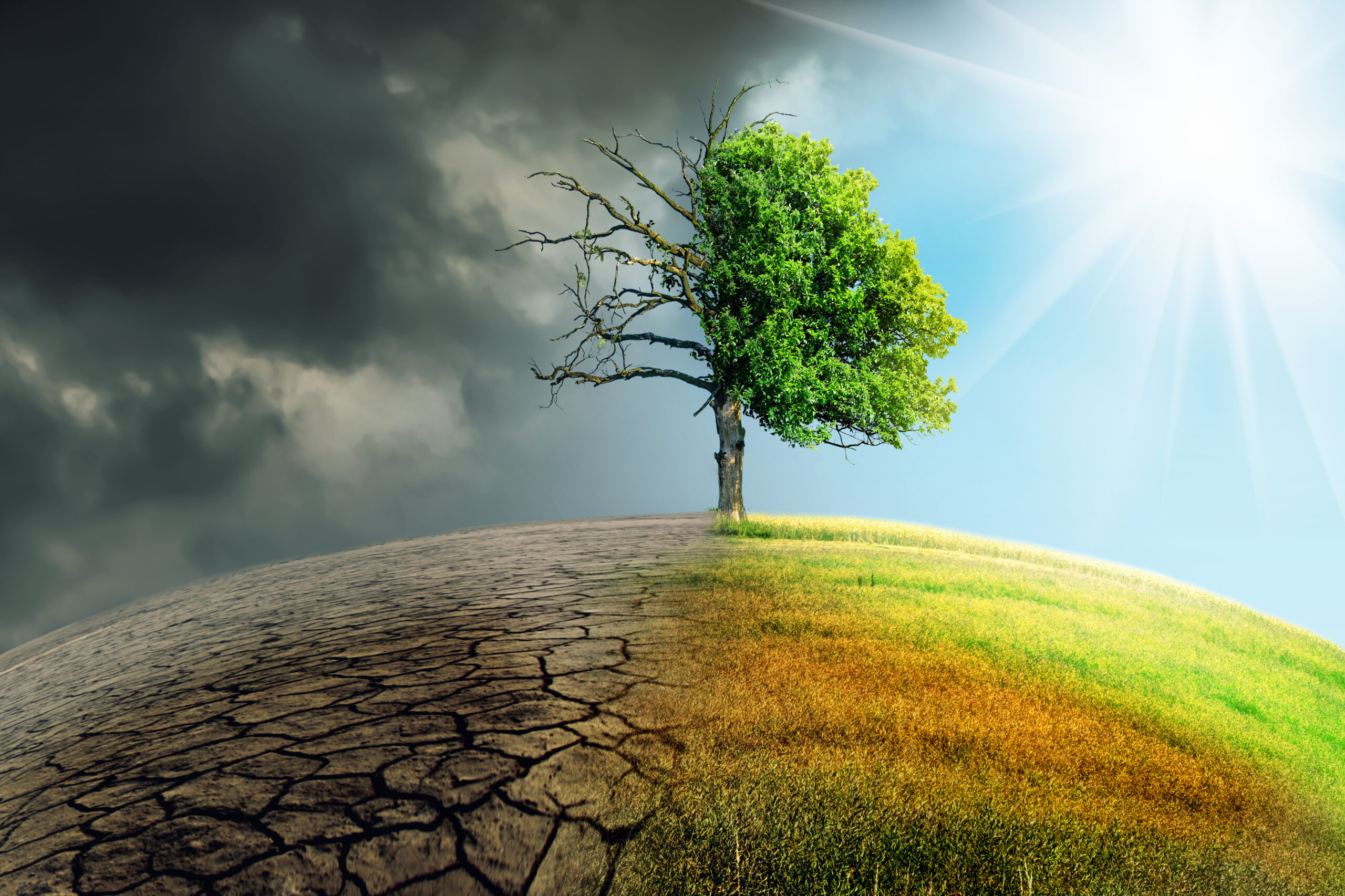
Imagine entire communities moving not because they want to, but because they have to. Climate change is quickly reshaping our world, and for many people, staying in their homes is becoming a distant dream. Rising sea levels, harsher droughts, and unpredictable storms are making certain places less livable every year, pushing people to pack up and leave.
Experts predict that by 2050, up to 1.2 billion people could be displaced due to climate impacts. These aren’t just numbers—they represent real people facing a difficult reality. This article dives into the predictions for our climate future and explores which regions are most at risk for mass migration. From small island nations to urban centers in developing countries, we’ll look at the looming challenges and what might be done to help those caught in the path of climate change.
How Climate Predictions Point to a Migration Crisis
To see why climate change might force so many people to move, let’s look at the science behind these predictions. Scientists use climate models—basically, advanced simulations—to forecast how things like temperature, rainfall, and sea levels will change over time. These models rely on years of data and reveal the patterns that give us a glimpse into the future.
But it’s not just about numbers. When scientists study these models, they’re seeing real-life consequences. Rising sea levels threaten to swallow coastlines, and severe droughts are already drying up farmland in some areas. For the people living in these places, that could mean losing their homes, jobs, and access to basic needs like food and water. Many will have little choice but to leave.
For example, some low-lying areas along coastlines are expected to experience frequent flooding, while other regions will face recurring droughts that make farming almost impossible. As more of these areas become unlivable, people may be forced to pack up and find somewhere safer. These climate predictions are painting a picture of what could be one of the biggest migration waves we’ve ever seen.
Global Hotspots of Climate Migration
Certain regions around the world are emerging as climate migration hotspots, where environmental degradation is driving mass displacement at alarming rates. Vulnerable due to geographic exposure, socio-economic challenges, or both, these areas serve as critical case studies for understanding how climate change forces entire populations to move.
1. South Asia: Rising Seas and Floods

In South Asia, the impacts of climate change are severe, with flooding and sea-level rise posing significant threats. Bangladesh, for instance, sits less than five meters above sea level on average, making it highly susceptible to the encroaching waters. A study by the World Bank predicts that by 2050, around 13 million people in Bangladesh alone could be displaced by rising sea levels and intensified flooding. As the original article notes, “Bangladesh floods caused by cyclones have increased the salinity of 53 percent of farmland,” leading to crop failures and forcing farmers to either adapt or relocate. To counter these challenges, initiatives like the Dutch Salt Solution project are teaching farmers to grow salt-tolerant crops, though resources for such adaptive solutions remain limited.
Another South Asian country facing growing climate displacement is India. Severe droughts in central India have repeatedly led to crop failures, forcing many agricultural workers to abandon their farms and migrate to urban centers for employment. These shifts place considerable strain on India’s urban infrastructure, raising concerns about unplanned urbanization and the spread of informal settlements in flood-prone areas. Studies indicate that as many as 40 million Indians could be displaced by climate impacts by mid-century if current trends continue.
2. Sub-Saharan Africa: Desertification and Water Scarcity
Sub-Saharan Africa is another region heavily impacted by climate-induced migration, primarily due to desertification and water scarcity. In areas like the Sahel, rising temperatures and prolonged droughts have drastically reduced agricultural output and livestock survival rates. This phenomenon is particularly evident around Lake Chad, a vital water source that has shrunk by over 90% in recent decades. According to the United Nations, “When temperatures rise in a country, it can reduce water availability and water quality… This may increase the likelihood of drought leading to crop failures that will reduce incomes and food supplies.”
As arable land diminishes, communities in countries such as Nigeria, Niger, and Chad are compelled to move, either to urban centers or across borders in search of sustainable living conditions. The International Organization for Migration (IOM) warns that the Sahel’s environmental degradation, combined with socio-political instability, is fueling a migration crisis that affects millions. A study published by the Institute for Economics and Peace (IEP) underscores this, projecting that up to 86 million people in Sub-Saharan Africa could become climate migrants by 2050 if climate resilience measures are not put in place.
3. Pacific Islands: Sea-Level Rise and Coastal Erosion

In the Pacific Islands, where much of the land is situated mere feet above sea level, climate migration is becoming inevitable. Countries like Kiribati and the Maldives are on the front lines, facing an existential threat as rising oceans steadily encroach on their territory. Kiribati’s government has even taken the extraordinary step of purchasing land in Fiji as a potential relocation site for its people, a stark indication of the seriousness of the situation. A report by the United Nations University suggests that the entire population of some low-lying island nations may need to relocate within decades if current sea-level rise projections hold true.
Efforts are underway to stabilize vulnerable land by planting fast-growing trees to slow down coastal erosion and reduce landslide risks. However, while helpful, these solutions don’t fully address the longer-term threat of rising seas for island nations.
4. Latin America: Drought and Agricultural Collapse
In Latin America, climate migration is driven by recurring droughts and the decline of traditional agricultural livelihoods. Countries such as Honduras, Guatemala, and El Salvador, which are part of the Central American “Dry Corridor,” face prolonged dry spells that have devastated crop yields. As livelihoods disappear, many residents are forced to migrate northward in search of stability and food security. According to the Intergovernmental Panel on Climate Change (IPCC), up to 17 million people in Latin America may be displaced by climate impacts by 2050, with the majority migrating internally or across borders.
In South America, the Andes region faces its own unique climate challenges. Melting glaciers, which have shrunk significantly over the past 40 years, threaten the water supply for cities and agricultural zones. A study conducted by the Andean Development Corporation found that over 30% of Andean glaciers have disappeared, jeopardizing the drinking water and irrigation sources for millions in Peru, Ecuador, and Bolivia. These changes, compounded by temperature increases and extreme weather, could lead to substantial rural-to-urban migration.
Understanding the Global Patterns
While these regions face unique climate pressures, the patterns of migration they exhibit reveal broader global trends. Resource scarcity, compounded by socio-political instability, drives people from rural areas to urban centers or across borders, often resulting in informal settlements with inadequate infrastructure. Rahman’s observation that “climate change knows no borders” aptly captures the interconnected nature of these challenges, underscoring the need for coordinated international responses.
What Happens When Climate Migrants Move In

When people are forced to leave their homes because of climate change, they usually don’t go far—they head to nearby towns or cities hoping to start over. But when large numbers arrive at once, the places they move to can feel the impact in big ways.
Crowded Cities and Limited Resources
Imagine a city already dealing with limited housing, crowded schools, and busy hospitals. Now add thousands of newcomers who also need homes, jobs, and places for their kids to learn. Suddenly, everything feels squeezed. There aren’t enough houses, jobs become harder to find, and public services get stretched thin. When resources are tight, both locals and newcomers can start to feel the strain.
With so many new faces, some locals worry about how their town is changing. When people from different backgrounds mix, it can lead to misunderstandings. But it doesn’t have to. If cities get the support they need, they can help newcomers settle in and thrive, making communities stronger and more vibrant.
The Bigger Picture
The effects of climate migration can ripple out, especially in places already struggling. Competition over resources like land and water can create real tension. It’s a reminder that to handle climate migration, we need smart planning—policies that support both migrants and the communities welcoming them. With the right steps, we can help everyone have a fair shot at a safe, stable future.
The Legal and Humanitarian Gaps for Climate Migrants

When people have to leave home because of climate disasters, they often find themselves with little support and few rights. Right now, most countries don’t recognize “climate refugees,” so people forced out by floods, droughts, or rising seas are often left without the legal protections that other refugees get.
No Official Status, No Help
Under current refugee laws, only people fleeing war or persecution qualify for certain protections, like asylum or legal residency. Climate migrants, however, don’t fit into those categories, which means they don’t get the same rights or support. For them, it’s like being stuck in a legal limbo—they’re escaping a life-threatening situation, but without official status, they’re often on their own.
Even within their own countries, many climate migrants face tough conditions. Some end up in makeshift camps or crowded areas with limited access to basics like clean water, food, and healthcare. With so many people in need, local resources often fall short, leaving migrants to live in challenging, sometimes unsafe, conditions.
As climate-driven migration grows, there’s a real need to rethink how we protect and support these migrants. Some experts suggest changing refugee laws to include climate migrants, while others push for new visa options or temporary protections. If nothing changes, millions will be left navigating an uncertain future—caught between a home they can’t return to and a new place that doesn’t recognize their need for safety.
Preparing for a Future of Climate Migration
As climate change reshapes the world, more people are finding they have no choice but to leave their homes. For some, it’s the rising seas; for others, it’s relentless droughts or devastating storms. And while the impacts are felt most immediately in certain hotspots, the ripple effect touches us all. From crowded cities to strained resources, climate migration is becoming an issue we all share.
To face this reality, we need to think ahead. This means updating our laws to protect climate migrants, supporting communities that welcome them, and helping at-risk areas adapt so people can stay if they choose. The way we respond now will shape the lives of millions and define how we handle the challenges ahead. With smart planning and compassion, we can build a future where everyone—whether staying put or starting fresh—has the chance at a safe, stable life.
Activism
Prayers Are Needed for Steve Irwin’s Daughter Bindi. She Is on Her Way to Recovery but Prayers Will Help a Lot

Bindi Irwin, celebrated for her dedication to wildlife conservation and carrying on her father Steve Irwin’s legacy, is no stranger to facing challenges in the public eye. From working with dangerous animals to maintaining her family’s work, she has always shown strength. Yet, behind her contagious smile and commitment to the natural world, Bindi has quietly been fighting a personal health battle, away from the limelight, for over ten years.
Recently, Bindi revealed her struggle with a condition that affects millions of women. This courageous step not only exposed the reality of her own experience but also opened up critical discussions about a topic that often remains misunderstood.
As she continues her journey to recovery, Bindi’s story has become one of hope and resilience. It’s a powerful reminder of the importance of raising awareness and advocating for those who suffer in silence. So, what has this journey been like for her, and how has it shaped the person she is today?
Bindi’s Ten-Year Battle for Diagnosis
For over a decade, Bindi Irwin quietly endured overwhelming pain, fatigue, and nausea, all without knowing the real cause. Like many women, her symptoms were brushed off by doctors, with some telling her that the pain was just “part of being a woman.” One doctor even told her to simply “deal with it.” These dismissals left her struggling not just physically but emotionally, as she was left without answers and continued suffering.
Bindi didn’t give up, though. She underwent numerous tests for everything from tropical diseases to cancer, but nothing explained her pain. It wasn’t until a close friend encouraged her to see a specialist that she finally found some clarity. In 2022, after another intense episode of pain left her curled up in a fetal position, Bindi had a laparoscopy—an important procedure that allows doctors to get a clearer look inside the abdomen. What they found was shocking: 37 lesions, some deeply embedded, and a “chocolate cyst” on one of her ovaries.
Hearing her doctor say, “How did you manage to live with this much pain?” was a moment of validation. Finally, she had the answers she had been seeking for so long. Sadly, Bindi’s story isn’t unique—many women with endometriosis face years of being ignored or misdiagnosed before getting proper help.
How Endometriosis Affected Bindi’s Life and Career
Bindi Irwin’s battle with endometriosis didn’t just cause physical pain—it impacted every aspect of her life. For more than ten years, she dealt with exhaustion, constant discomfort, and nausea. Despite these struggles, she continued her work as a conservationist, public figure, and a new mom to her daughter, Grace. But behind the scenes, things were far more difficult than most people knew. As Bindi once said, “Every part of my life was being torn apart because of the pain.”
The symptoms of endometriosis—like severe pelvic pain, painful periods, and fatigue—were always present, making it hard for her to keep up with her busy career. Her days at Australia Zoo, where she works alongside her family, became more challenging as she struggled to manage both her work and her health. Even simple social events had to be put on hold, as she funneled every bit of energy into just getting through each day. This invisible battle made it difficult for others to truly understand how much she was suffering.
Beyond the physical toll, the emotional burden was just as heavy. Like many women with chronic conditions, Bindi often felt isolated and frustrated by the lack of understanding from the medical community. One doctor even told her to “just deal with it,” a common experience for women whose pain is often dismissed.
Bindi’s story mirrors the experiences of many women dealing with endometriosis—struggling in silence while trying to maintain their personal and professional lives. It’s not just a physical condition; it affects your entire world.
Speaking Up: Turning Pain Into Purpose
After years of silently struggling, Bindi Irwin made the courageous choice to open up about her experience with endometriosis. In March 2023, just after her surgery, she shared her story on social media, letting the world in on her personal battle. Her message was heartfelt and honest, connecting deeply with women who had faced similar challenges. “There’s a stigma around this awful disease,” Bindi wrote. “I’m sharing my story for anyone who’s quietly dealing with pain and still searching for answers.”
By speaking out, Bindi didn’t just shed light on her own pain—she highlighted an issue that affects millions of women but often goes unnoticed. Endometriosis is more than just bad cramps; it’s a condition that can take over your life. Bindi’s openness helped start important conversations about how we need better education, awareness, and support for those dealing with this condition.
When Bindi received the Endometriosis Foundation of America’s Blossom Award, she made her mission clear: “I’ll spend the rest of my life raising awareness and helping others who are fighting this same battle.” Her willingness to speak up has given a voice to so many who feel overlooked or misunderstood.
Bindi’s story is a powerful reminder that sometimes, sharing your pain can help others find their own strength. She’s not just fighting for herself—she’s fighting for every woman who’s been told her pain doesn’t matter.
Coping with Endometriosis

Dealing with endometriosis is tough, but there are little things you can do to make life more manageable. Sometimes it’s as simple as taking a break to breathe deeply or stretch. Even a few minutes of calm can help ease stress, which often makes the pain worse. Writing down how you feel each day can also be helpful—it lets you spot patterns and helps your doctor find better ways to treat your symptoms.
Moving your body, even if it’s just taking a short walk or doing some light stretching, can help a lot. It gets your blood flowing and can make you feel a bit better. Eating more fresh foods—like fruits, veggies, and whole grains—may also lower inflammation, which could ease some of the symptoms. And on those really rough days, using a heating pad or soaking in a warm bath can bring quick relief.
But above all, don’t go through this alone. Talk to someone—a friend, a family member, or even a support group. Just having people around who understand what you’re going through can make a huge difference when things get hard.
Bindi’s Journey of Healing and Advocacy
Bindi Irwin’s journey with endometriosis is a story of strength and determination. After years of quietly enduring pain, she’s now using her experience to help others. By opening up about what she’s been through, Bindi is giving a voice to so many women who’ve felt ignored or brushed aside. Her message is clear: your pain is real, and it deserves to be taken seriously.
Bindi’s honesty is already making a difference. She’s sparking conversations that are much needed, shining a light on how often women’s health issues get overlooked. And she’s showing that speaking up can lead to real change—not just for herself, but for so many others.
As Bindi moves forward, she’s balancing her life as a mom, a conservationist, and now, an advocate for women’s health. Her story is a reminder that, even when things seem impossible, there’s always hope. By sharing her journey, she’s letting others know they’re not alone and that better days are ahead. No matter how tough the fight, Bindi’s courage shows us that healing is possible, and there’s always hope on the horizon.
Awareness
11 Things You Really Need to Stop Recycling
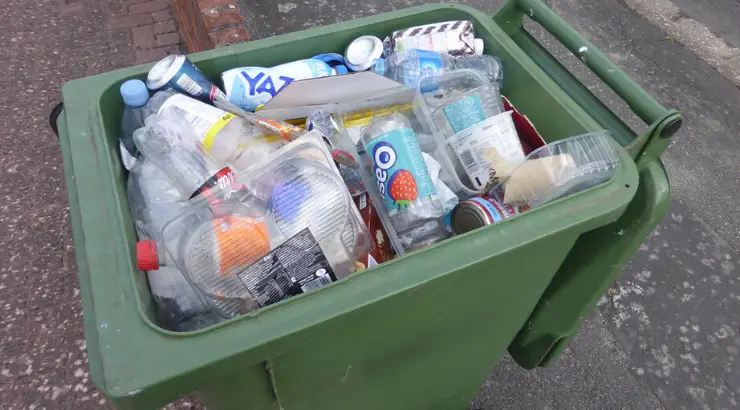
(TMU Op-Ed) — Since most of us were kids we’ve heard the phrase Reduce, Reuse, Recycle repeated ad nauseam everywhere from on TV to ads plastered on the sides of buses, on recycling bins, on coloring pages, and a host of other places.
However, over the years it seems something was lost in translation. With less focus placed on reducing and reusing, our recycling bins are overflowing week after week. Sure, it might be better to have an overflowing recycling bin than it is to have an overflowing trash bin, but how much better is it really?
At the same time we’re finally seeing an increase of recycling outside of the home at places like schools, gas stations, airports, etc. we’re also seeing a dramatic cutting back of the acceptance of recyclables created in the United States. China recently started restricting the import of recyclable waste including mixed paper and most plastics. The news of this happening was the first time that many people in the United States became aware that a lot of our recycling isn’t actually recycled here. For an act billed as a necessity to saving the environment, the fact that it uses an overwhelming amount of time and resources including fuel to ship it overseas is a little concerning.
But more than that, recycling is only a thing because recyclables are valuable. According to a press release, “The global waste management market size is expected to reach $484.9 billion by 2025.” This means that when you toss something into your recycling bin and it is not able to turn a profit it won’t be recycled. Unfortunately this isn’t rare.
Then there’s also the people that are too hopeful about the abilities of the recycling industry and as a result they toss everything in the bin regardless of what the code on the bottom of the item says or what their local rules say. It only takes a little bit of the wrong thing from a “wishful” recycler to ruin an entire batch of recyclable material. And this too isn’t rare. In fact, according to Waste Management one out of every four items that ends up in recycling bins doesn’t actually belong there.
Here are 11 things that “wishful” recyclers tend to toss in the bin:
- Plastic Bags — To some it may be common knowledge that plastic shopping bags, bubble wrap, cereal bags, food wrap, and more cannot be recycled in your home bin but they still find their way into municipal recycling facilities far too often. These bags can clog up machines and workers must remove them by hand. Thankfully plastic bags are accepted at many stores including local co-ops and chains like Target and Trader Joes.
- Receipts — Unfortunately, most receipts that you receive while shopping are coated in Bisphenol A (BPA). While yes they are paper, the fact that they are coated in BPA means that it contaminates the paper product being made when they get mixed in with the pulp. If you don’t need a receipt just decline it at the store since you can’t recycle it and more importantly because the BPA coating comes off onto your hands and other surfaces. This is especially important information for parents who often hand receipts off to antsy kids during shopping trips. Skip the receipts if you can and if you can’t be sure to wash your hands after handling them.
- Pizza Boxes — Takeout and delivery pizza boxes can’t be recycled, despite their obvious cardboard construction. Any paper product with even the smallest amount of food strains cannot be recycled and this always includes pizza boxes. Thankfully many pizza boxes are now made to be compostable and will say so on the box but remember: compostable does not equal recyclable.
- Bits of Food — Just because you can recycle something doesn’t mean you can recycle it dirty. Rinse out glass and plastic before tossing it in the bin and if the container is still greasy use some soap and water. Even a little bit of food can ruin an entire load of recycling.
- Coffee Cups — Even the greenest among us find ourselves out and about without our own cup when we crave a cup of coffee. Unfortunately, while those cups are paper, they’re lined with plastic film to keep the liquid from soaking into and then out of it which makes them impossible to recycle. The lids and the paper sleeves are recyclable but the cups never are. Next time you’re out without your own reusable cup, ask the barista for a “here” cup and finish your drink before leaving.
- Wrapping Paper — Some municipalities accept wrapping paper but it is important to check your local rules. However, the popular shiny and metallic papers are never recyclable. If you are able to recycle basic, matte wrapping paper be sure to remove ribbons and bows. In lieu of using store bought gift wrap, try transitioning into using newspaper, paper bags, or the brown paper that sometimes comes inside of shipping packages.
- Shredded Paper — There are good reasons to shred certain documents at home but unless you compost it’s better to stick to shredding only that which must be shredded because recycling centers just can’t handle those tiny strips of paper. In fact they can clog up the equipment because they’re so small! Thankfully shredded paper can be composted but make sure not to include envelopes with plastic windows or anything else that isn’t paper. However, some municipalities will accept shredded paper but only if it’s placed in a paper bag and stapled close so please check your local rules for this one.
- Broken Things — Broken plates and glass shouldn’t be placed in your recycling for various reasons. One of the biggest is that they pose a hazard to sanitation workers. If you have broken items wrap them in plastic and carefully put them in the trash.
- Old Dishes — Plates and glassware are not recyclable. If you have items that are in good condition take them to a thrift store instead of throwing them away. Bakeware has a much different melting point and chemical composition than normal recyclable glass.
- Bits of Metal — Some things are too small to recycle. Just like how a piece of paper is recyclable but shredded paper is not, the tab from a metal can isn’t recyclable by itself even though an entire can is. And it’s for the same reason—these small things can clog up the machinery and slow down the entire recycling process. If a soda can tab does fall off, place it inside the can when you’re done. If you have little bits of tinfoil, keep it somewhere safe and add to it until it becomes a big ball.
- Food Boxes and Containers — Most freezer food boxes are coated in plastic, much like coffee cups. And just like coffee cups it makes these otherwise paper products not recyclable. Unfortunately this is the same for cartons that contain nut milk, oat milk, juice, soups, and more. Some municipalities currently accept these cartons but it is not the norm. You can find out more about how to recycle those containers here.
Remember: when in doubt, throw it out. It’s better to mistakenly throw something away that could be recycled than be an aspirational recycler and ruin an entire truck load of recycling. And always check with your local municipality at least once a year to stay up to date on the rules where you live.
Reduce, reuse, recycle—in that order.
Opinion
The Origins of Thought Police — and Why They Scare Us
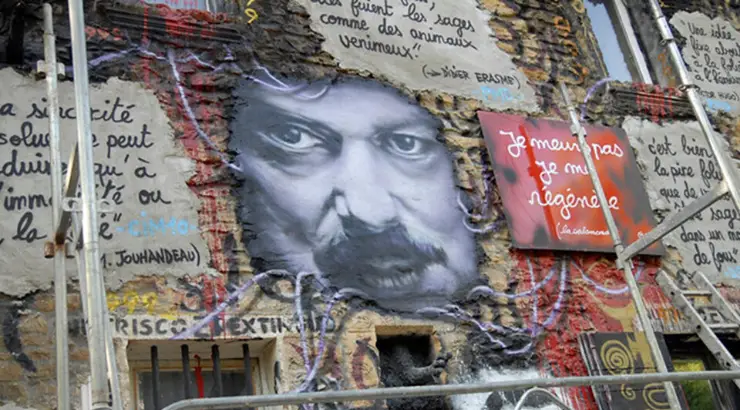
(FEE Opinion) — There are a lot of unpleasant things in George Orwell’s dystopian novel 1984. Spying screens. Torture and propaganda. Victory Gin and Victory Coffee always sounded particularly dreadful. And there is Winston Smith’s varicose ulcer, apparently a symbol of his humanity (or something), which always seems to be “throbbing.” Gross.
None of this sounds very enjoyable, but it’s not the worst thing in 1984. To me, the most terrifying part was that you couldn’t keep Big Brother out of your head.
Unlike other 20th-century totalitarians, the authoritarians in 1984 aren’t that interested in controlling behavior or speech. They do, of course, but it’s only as a means to an end. Their real goal is to control the gray matter between the ears.
“When finally you surrender to us, it must be of your own free will,” O’Brien (the bad guy) tells the protagonist Winston Smith near the end of the book.
We do not destroy the heretic because he resists us: so long as he resists us we never destroy him. We convert him, we capture his inner mind, we reshape him.
Big Brother’s tool for doing this is the Thought Police, aka the ThinkPol, who are assigned to root out and punish unapproved thoughts. We see how this works when Winston’s neighbor Parsons, an obnoxious Party sycophant, is reported to the Thought Police by his own child, who heard him commit a thought crime while talking in his sleep.
“It was my little daughter,” Parsons tells Winston when asked who it was who denounced him. “She listened at the keyhole. Heard what I was saying, and nipped off to the patrols the very next day. Pretty smart for a nipper of seven, eh?”
Who Are These Thought Police?
We don’t know a lot about the Thought Police, and some of what we think we know may actually not be true since some of what Winston learns comes from the Inner Party, and they lie.
What we know is this: The Thought Police are secret police of Oceania—the fictional land of 1984 that probably consists of the UK, the Americas, and parts of Africa—who use surveillance and informants to monitor the thoughts of citizens. The Thought Police also use psychological warfare and false-flag operations to entrap free thinkers or nonconformists.
Those who stray from Party orthodoxy are punished but not killed. The Thought Police don’t want to kill nonconformists so much as break them. This happens in Room 101 of the Ministry of Love, where prisoners are re-educated through degradation and torture. (Funny sidebar: the name Room 101 apparently was inspired by a conference room at the BBC in which Orwell was forced to endure tediously long meetings.)
The Origins of the Thought Police
Orwell didn’t create the Thought Police out of thin air. They were inspired to at least some degree by his experiences in the Spanish Civil War (1936-1939), a complicated and confusing affair. What you really need to know is that there were no good guys, and it ended with left-leaning anarchists and Republicans in Spain crushed by their Communist overlords, which helped the fascists win.
Orwell, an idealistic 33-year-old socialist when the conflict started, supported the anarchists and loyalists fighting for the left-leaning Second Spanish Republic, which received most of its support from the Soviet Union and Josef Stalin. (That might sound bad, but keep in mind that the Nazis were on the other side.) Orwell described the atmosphere in Barcelona in December 1936 when everything seemed to be going well for his side.
The anarchists were still in virtual control of Catalonia and the revolution was still in full swing … It was the first time that I had ever been in a town where the working class was in the saddle,
he wrote in Homage to Catalonia.
[E]very wall was scrawled with the hammer and sickle … every shop and café had an inscription saying that it had been collectivized.
That all changed pretty fast. Stalin, a rather paranoid fellow, was bent on making Republican Spain loyal to him. Factions and leaders perceived as loyal to his exiled Communist rival, Leon Trotsky, were liquidated. Loyal Communists found themselves denounced as fascists. Nonconformists and “uncontrollables” were disappeared.
Orwell never forgot the purges or the steady stream of lies and propaganda churned out from Communist papers during the conflict. (To be fair, their Nationalist opponents also used propaganda and lies.) Stalin’s NKVD was not exactly like the Thought Police—the NKVD showed less patience with its victims—but they certainly helped inspire Orwell’s secret police.
The Thought Police were not all propaganda and torture, though. They also stem from Orwell’s ideas on truth. During his time in Spain, he saw how power could corrupt truth, and he shared these reflections in his work George Orwell: My Country Right or Left, 1940-1943.
…I saw newspaper reports which did not bear any relation to the facts, not even the relationship which is implied in an ordinary lie. I saw great battles reported where there had been no fighting, and complete silence where hundreds of men had been killed. I saw troops who had fought bravely denounced as cowards and traitors, and others who had never seen a shot fired hailed as the heroes of imaginary victories; and I saw newspapers in London retailing these lies and eager intellectuals building emotional superstructures over events that had never happened.
In short, Orwell’s brush with totalitarianism left him worried that “the very concept of objective truth is fading out of the world.”
This scared him. A lot. He actually wrote, “This kind of thing is frightening to me.”
Finally, the Thought Police were also inspired by the human struggle for self-honesty and the pressure to conform. “The individual has always had to struggle to keep from being overwhelmed by the tribe,” Rudyard Kipling once observed.
The struggle to remain true to one’s self was also felt by Orwell, who wrote about “the smelly little orthodoxies” that contend for the human soul. Orwell prided himself with a “power of facing unpleasant facts”—something of a rarity in humans—even though it often hurt him in British society.
In a sense, 1984 is largely a book about the human capacity to maintain a grip on the truth in the face of propaganda and power.
More Prophetic Than He Knew?
It might be tempting to dismiss Orwell’s book as a figment of dystopian literature. Unfortunately, that’s not as easy as it sounds. Modern history shows he was onto something.
When the Berlin Wall came down in November 1989, it was revealed that the Stasi, East Germany’s secret police, had a full-time staff of 91,000. That sounds like a lot, and it is, but what’s frightening is that the organization had almost double that in informants, including children. And it wasn’t just children reporting on parents; sometimes it was the other way around.
Nor did the use of state spies to prosecute thoughtcrimes end with the fall of the Soviet Union. Believe it or not, it’s still happening today. The New York Times recently ran a report featuring one Peng Wei, a 21-year-old Chinese chemistry major. He is one of the thousands of “student information officers” China uses to root out professors who show signs of disloyalty to President Xi Jinping or the Communist Party.
The New Thought Police?
The First Amendment of the US Constitution, fortunately, largely protects Americans from the creepy authoritarian systems found in 1984, East Germany, and China; but the rise of “cancel culture” shows the pressure to conform to all sorts of orthodoxies (smelly or not) remains strong.
The new Thought Police may be less sinister than the ThinkPol in 1984, but the next generation will have to decide if seeking conformity of thought or language through public shaming is healthy or suffocating. FEE’s Dan Sanchez recently observed that many people today feel like they’re “walking on eggshells” and live in fear of making a verbal mistake that could draw condemnation.
That’s a lot of pressure, especially for people still learning the acceptable boundaries of a new moral code that is constantly evolving. Most people, if the pressure is sufficient, will eventually say “2+2=5” just to escape punishment. That’s exactly what Winston Smith does at the end of 1984, after all. Yet Orwell also leaves readers with a glimmer of hope.
“Being in a minority, even a minority of one, did not make you mad,” Orwell wrote. “There was truth and there was untruth, and if you clung to the truth even against the whole world, you were not mad.”
In other words, the world may be mad, but that doesn’t mean you have to be.
By Jon Miltimore | FEE.org | Republished with permission
The views in this article may not reflect editorial policy of The Mind Unleashed.
Awareness
The ADHD Overdiagnosis Epidemic: What You Need to Know

(FEE) — Childhood exuberance is now a liability. Behaviors that were once accepted as normal, even if mildly irritating to adults, are increasingly viewed as unacceptable and cause for medical intervention. High energy, lack of impulse control, inability to sit still and listen, lack of organizational skills, fidgeting, talking incessantly—these typical childhood qualities were widely tolerated until relatively recently. Today, children with these characteristics are being diagnosed with, and often medicated for, Attention-Deficit/Hyperactivity Disorder (ADHD) at an astonishing rate.
The ADHD Medical Dragnet
While ADHD may be a real and debilitating ailment for some, the startling upsurge in school-age children being labeled with and medicated for this disorder suggests that something else could be to blame. More research points to schooling, particularly early schooling, as a primary culprit in the ADHD diagnosis epidemic.
Over the last several decades, young people are spending more time in school and school-like activities than ever before. They are playing less and expected to do more at very young ages. When many of us were kids, kindergarten was mellow, playful, and short with few academic expectations. Now, 80 percent of teachers expectchildren to learn to read in kindergarten. It’s not the teachers’ fault. They are responding to national curriculum frameworks and standardized testing requirements that over the past two decades have made schooling more oppressive—particularly for young children.
The youngest children are the ones most often caught in the ADHD medical dragnet. Last fall, Harvard researchers found that early school enrollment was linked to significantly higher rates of ADHD diagnosis. In states with a September 1 school enrollment age cutoff, children who entered school after just turning five in August were 30 percent more likely to be diagnosed with ADHD than children born in September who were about to turn six. Immaturity, not pathology, was the real factor.
The ADHD Fallacy
Marilyn Wedge, author of A Disease Called Childhood: Why ADHD Became An American Epidemic, sounds the alarm on ADHD overdiagnosis. In a Time Magazine article called “The ADHD Fallacy,” she writes:
By nature, young children have a lot of energy. They are impulsive, physically active, have trouble sitting still, and don’t pay attention for very long. Their natural curiosity leads them to blurt out questions, oblivious in their excitement to interrupting others. Yet we expect five- and six-year-old children to sit still and pay attention in classrooms and contain their curiosity. If they don’t, we are quick to diagnose them with ADHD.
According to the US Centers for Disease Control and Prevention (CDC), the percent of very young children (ages two to five) who were diagnosed with ADHD increased by over 50 percent between 2007/2008 and 2011/2012. As of 2016, data show that 9.4 percent of all American children, or over six million kids, had been diagnosed with ADHD, and almost two-thirds of current ADHD-diagnosed children were taking medication for it. A March 2019 report on ADHD by Blue Cross and Blue Shield found that among commercially insured children of all ages, ADHD diagnosis rates increased 30 percent in just eight years.
While the symptoms of ADHD may be troublesome, looking first at the environment, rather than the child, may be an important step toward curbing the ADHD diagnosis epidemic. In his book, ADHD Does Not Exist, Dr. Richard Saul, a Chicago behavioral neurologist, explains that individuals diagnosed with ADHD either have external factors that exacerbate normal symptoms or have some other underlying condition that should be identified and treated. In the latter instance, he finds that once the underlying condition is discovered and treated, the ADHD symptoms usually disappear. In the former instance, changing the environment is a key step toward improvement. This is true for both children and adults with an ADHD diagnosis. Dr. Saul writes:
Like many children who act out because they are not challenged enough in the classroom, adults whose jobs or class work are not personally fulfilling or who don’t engage in a meaningful hobby will understandably become bored, depressed and distracted. In addition, today’s rising standards are pressuring children and adults to perform better and longer at school and at work.
An Environmental Mismatch
Addressing an environmental mismatch for ADHD-diagnosed adults could mean switching one’s job or field of study or pursuing a true passion. Maybe you’re an accountant who wants to be a carpenter or a nurse who wants to be an entrepreneur. For ADHD children, changing the environment could mean removing children from restrictive schooling altogether. As Boston College psychology professor Peter Gray writes:
What does it mean to have ADHD? Basically, it means failure to adapt to the conditions of standard schooling. Most diagnoses of ADHD originate with teachers’ observations.
Jennifer Walenski saw firsthand how transformative removing her ADHD-diagnosed child from standard schooling could be. She shares her family’s journey at The Bus Story and told me:
Our kids were actually in public school originally. Our son also was diagnosed with both ADHD and autism while he was in the school system. And they wanted to medicate him. But we said no. Then we took him and his sister out of school and began homeschooling them. Fast forward several years, he has absolutely no need at all for medication. He is just a normal boy who did not belong in that kind of environment. And most of us don’t. Think about it.
Walenski’s experience echoes that of other parents who removed their ADHD-diagnosed children from standard schooling. In an informal survey analysis, Gray discovered that when ADHD-labeled children left school for homeschooling, most of them no longer needed medication for ADHD symptoms. Their ADHD characteristics often remained but were no longer problematic outside of the conventional classroom.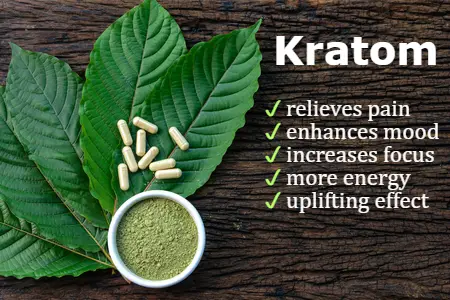
Self-Directed Learning
Gray’s analysis also revealed that the ADHD-labeled young people who fared best outside of standard schooling were those who were able to learn in a more self-directed way. He found that the
few kids in this sample who were still on ADHD medications during homeschooling seemed to be primarily those whose homeschooling was structured by the parent and modeled after the education one would receive in a conventional school.
Replicating school-at-home can also replicate the problematic behaviors found at school, whereas moving toward unschooling, or self-directed education, can give young people the freedom to flourish.
Ending the ADHD overdiagnosis epidemic depends on a societal reality check where we no longer pathologize normal childhood behaviors. Much ADHD-labeling originates from forced schooling environments with learning and behavioral expectations that are developmentally inappropriate for many children. Freeing young people from restrictive schooling and allowing them to learn and grow through their own self-directed curiosity can lead to happier and healthier families and children.
By Kerry McDonald | FEE.org
The views in this article may not reflect editorial policy of The Mind Unleashed.
Science & Tech
Have Aliens Found Us? This Harvard Scientist Says It’s Possible
Back in October of 2017, astronomers at the University of Hawaii spotted something bizarre passing through our solar system and they named it ‘Oumuamua, Hawaiian for scout or messenger. ‘Oumuamua was the first interstellar object to ever be detected in our solar system.
One year later, in October of 2018, the chair of Harvard’s astronomy department co-wrote a paper examining the object’s acceleration, which they described as “peculiar.” The two, Harvard professor Avi Loeb and Harvard postdoctoral fellow Shmuel Bialy, suggested that the object “may be a fully operational probe sent intentionally to Earth’s vicinity by an alien civilization.” That’s quite the claim and the pair instantly received significant backlash for their controversial theory.
Loeb said of the potential for making contact with alien civilization:
“As soon as we leave the solar system, I believe we will see a great deal of traffic out there. Possibly we’ll get a message that says, ‘Welcome to the interstellar club.’ Or we’ll discover multiple dead civilizations — that is, we’ll find their remains.”
In a recent interview in The New Yorker, Loeb attempts to shed on some light on the object, the paper he co-authored and the controversial theory that his paper presented.
So what’s so unusual about ‘Oumuamua anyway? Loeb explains that astronomers can calculate the rate at which rocks are ejected in space and how that calculation leads one of many peculiar facts about ‘Oumuamua:
“When you look at all the stars in the vicinity of the sun, they move relative to the sun, the sun moves relative to them, but only one in five hundred stars in that frame is moving as slow as ‘Oumuamua. You would expect that most rocks would move roughly at the speed of the star they came from. If this object came from another star, that star would have to be very special.”
The object was observed spinning every eight hours while it’s brightness changed significantly, leaving the astronomers puzzled.
“When it was discovered, we realized it spins every eight hours, and its brightness changed by at least a factor of ten. The fact that its brightness varies by a factor of ten as it spins means that it is at least ten times longer than it is wide. We don’t have a photo, but, in all the artists’ illustrations that you have seen on the Web, it looks like a cigar. That’s one possibility. But it’s also possible that it’s a pancake-like geometry, and, in fact, that is favored.“
‘Oumuamua is shaped like a pancake, another bizarre and significant observation. Why a pancake and why is that abnormal? Objects that orbit the sun have a shape influenced by the gravitational force of the sun, the same force that results in their orbit. Deviation from that rule happens in objects like comets. Evaporation of ice from the surface of a comet creates gasses that push it, sort of like a rocket, and also cause the tail of evaporated gas that most stargazers are familiar with. ‘Oumuamua doesn’t have one of those.
“We don’t see a cometary tail here, but, nevertheless, we see a deviation from the expected orbit. And that is the thing that triggered the paper. Once I realized that the object is moving differently than expected, then the question is what gives it the extra push.“
‘Oumuamua is unlike any comet we have ever seen in our solar system, so it probably isn’t one. Could it be an asteroid?
“Its brightness varies by a factor of ten, and the maximum you typically observe is a factor of three. It has a much more extreme geometry, and there is some other force pushing it.”
So the question remains, what is making ‘Oumuamua move?
“The only thing that came to my mind is that maybe the light from the sun, as it bounces off its surface, gives it an extra push. It’s just like a wind bouncing off a sail on a sailboat. So we checked that and found that you need the thickness of the object to be less than a millimeter in order for that to work. If it is indeed less than a millimeter thick, if it is pushed by the sunlight, then it is maybe a light sail, and I could not think of any natural process that would make a light sail. It is much more likely that it is being made by artificial means, by a technological civilization.”
Loeb, who has “long been interested in the search for extraterrestrial life,” according to The New Yorker, took the opportunity to elaborate on just that:
“I should say, just as background, I do not view the possibility of a technological civilization as speculative, for two reasons. The first is that we exist. And the second is that at least a quarter of the stars in the Milky Way galaxy have a planet like Earth, with surface conditions that are very similar to Earth, and the chemistry of life as we know it could develop. If you roll the dice so many times, and there are tens of billions of stars in the Milky Way, it is quite likely we are not alone.“
If ‘Oumuamua did originate from an alien civilization, it didn’t come from our solar system. According to Loeb, it would have originated from somewhere in our galaxy instead, but there’s a chance “that the civilization is not alive anymore.”
“Imagine another history, in which the Nazis have a nuclear weapon and the Second World War ends differently. You can imagine a civilization that develops technology like that, which would lead to its own destruction.”
Loeb insists the point is simple:
“[T]his is the very first object we found from outside the solar system. It is very similar to when I walk on the beach with my daughter and look at the seashells that are swept ashore. Every now and then we find an object of artificial origin. And this could be a message in a bottle, and we should be open-minded. So we put this sentence in the paper.”
In response to those criticizing his paper and in summary of why ‘Oumuamua is worth paying attention to, Loeb had this to say:
“The point is that we follow the evidence, and the evidence in this particular case is that there are six peculiar facts. And one of these facts is that it deviated from an orbit shaped by gravity while not showing any of the telltale signs of cometary outgassing activity. So we don’t see the gas around it, we don’t see the cometary tail. It has an extreme shape that we have never seen before in either asteroids or comets. We know that we couldn’t detect any heat from it and that it’s much more shiny, by a factor of ten, than a typical asteroid or comet. All of these are facts. I am following the facts.”
Speaking of the facts, Loeb drew a grand distinction between his curiosity of and the facts surrounding ‘Oumuamua and popular ideas such as the multiverse and extra dimensions:
“The multiverse is a mainstream idea—that anything that can happen will happen an infinite number of times. And I think that is not scientific, because it cannot be tested. Whereas the next time we see an object like this one, we can contemplate taking a photograph. My motivation, in part, is to motivate the scientific community to collect more data on the next object rather than argue a priori that they know the answer. In the multiverse case, we have no way of testing it, and everyone is happy to say, “Ya!”
Another mainstream idea is the extra dimension. You see that in string theory, which gets a lot of good press, and awards are given to members of that community. Not only has it not been tested empirically for almost forty years now but there is no hope it will be tested in the next forty years.“
In the end, Loeb’s questioning is simply a part of science:
“We have seen an object from outside the solar system, and we are trying to figure what it is made of and where it came from. We don’t have as much data as I would like. Given the data that we have, I am putting this on the table, and it bothers people to even think about that, just like it bothered the Church in the days of Galileo to even think about the possibility that the Earth moves around the sun. Prejudice is based on experience in the past. The problem is that it prevents you from making discoveries. If you put the probability at zero per cent of an object coming into the solar system, you would never find it!”
In conclusion: “If these beings are peaceful, we could learn a lot from them.”
Awareness
The US is Becoming a Nation of Sheep — Here’s How to Stop It
“Democracy is two wolves and a lamb voting on what to have for lunch. Liberty is a well-armed lamb contesting the vote.” ~Attributed to Benjamin Franklin
“Well-armed” doesn’t necessarily need to mean militantly locked and loaded. It can just as easily be a higher consciousness metaphor for knowledge. Indeed, a well-armed lamb is a knowledgeable lamb. As Doctor Who said, “You want weapons. Go to a library. Books are the best weapons in the world.”
A well-armed lamb can eventually transform into a lion. In a world of blind obedience to authority, it takes a particular flavor of courage (mostly the courage to question authority) to wake up the blindly obedient (sheep) to the extent of their ignorance, and to poke holes in the unhealthy, unsustainable and violent power constructs (sick society) built by entrenched authority.
The blindly obedient are the lambs. The entrenched authority are the wolves. And the uncommonly courageous are the lions.
As stated in the movie Robin Hood, “Rise and rise again, until lambs become lions.”
MAGA is MAFA:
“Beware of the good and the just! They like to crucify those who invent their own virtue for themselves.” ~Nietzsche
Making America Great Again is Making America Free Again. The only thing that is truly anti-American is anti-freedom. Lambs and wolves are afraid of freedom for different reasons.
Lambs are afraid to lose their comfort, security and safety, and thus cling to it at the expense of freedom. Wolves are afraid to lose their power and are intent upon keeping everyone divided and afraid so that they can maintain their overreaching power. The lion breaks the vicious cycle with small and large acts of courage by checking the entrenched (and thus corruptible) power of wolves.
But how does a lamb transform fear into courage and thus become the brave lion who is capable of keeping wolves in check? The lamb must first put itself in check by questioning why it believes what it believes about the way the world works.
The lamb must ask itself: Are my beliefs merely culturally conditioned by a sick society? Have I been brainwashed into believing a certain way by a religion or political party? Do I just blindly obey out of fear of losing my comfort, safety and security? And, most importantly of all, once I realize I’ve been mistaken, will I cease being mistaken or will I cease being honest?
It’s a tricky tightrope between fear and courage, and the menacing maw of the abyss is ever-present beneath it. The way toward freedom is not for the faint of heart. Which is probably why there are so few lions among men.
A lamb that can manage to question its fear-based lifestyle –which is built upon blind obedience, addiction to comfort, and reliance on wolves to keep them “safe”– is a lamb that has the potential to become, at least, a well-armed lamb, if not a courageous lion.
If a lamb can manage to become a well-armed lamb or to transform itself into a courageous lion, then the next step is to show its teeth (knowledge/courage) to the world.
Shove the first amendment down everyone’s throat:
“Those who make peaceful revolution impossible will make violent revolution inevitable.” ~John F. Kennedy
The First Amendment gives every American the right to “petition his government for a redress of grievances.” No matter the seeming “goodness” or “righteousness” of that government.
Freedom begins with individuals being free to express themselves. An individual who chooses to remain blindly obedient and silent to unchecked power is an unfree lamb. An individual who chooses to question the chain of obedience with the knowledge it has gained is a well-armed lamb contesting power. An individual who is willing to put everything on the line to maintain freedom in the face of tyranny is a courageous lion.
The beauty of the first amendment is that it maintains the essence of freedom: free expression. Without it, there can be no liberty. Without it, there can only be tyranny.
Well-armed lambs and courageous lions are able to take advantage of the first amendment as a platform for speaking truth to power.
Whether through peaceful protests (Thoreau’s civil disobedience), or revolutionary speeches (MLK jr./ JFK), or hard-hitting political articles, or even radical eye-opening art; the first amendment is a platform for freedom. It must be protected at all costs.
Free speech should never be controlled by an authority. No matter how popular that authority. Free speech is paramount for freedom to exist at all. As John W. Whitehead said, “If the government can control speech, it can control thought, and, in turn, it can control the minds of the citizenry.”
Lest we become a nation of mindless sheep, free speech must be protected at all costs against the wolves who seek to muzzle lambs. It is protected by well-armed lambs and courageous lions with the mettle and the wherewithal to speak truth to power.
Don’t kowtow to the chain of obedience (but don’t be violent either):
“Disobedience is the true foundation of liberty. The obedient must be slaves.” ~Henry David Thoreau
Never confuse patriotism with blind obedience. Many a cowardly lamb makes this mistake. And many a cowardly wolf uses it to lord power over lambs.
Sometimes being a true patriot means questioning power. Especially if that power is violent, unjust, and overreaching. As Barbara Ehrenreich said, “Dissent, rebellion, and all-around hell-raising remain the true duty of patriots.”
Don’t allow yourself to be brainwashed into believing that everything the government does is for the good and anyone who opposes the government is an enemy.
The government is made up of people. And people are fallible. Likewise, the state. Likewise, the chain of obedience. As Edward Abbey wisely stated, “Since few men are wise enough to rule themselves, even fewer are wise enough to rule others.”
There must be checks and balances. Fallible individuals checking the power of systems made up of other fallible individuals is the only way to prevent the power within those fallible systems from becoming corrupt. Let alone from corrupting absolutely.
It is vital that whatever we are freeing ourselves for, and whatever freedom we are advocating for, does not violate the nonaggression principle. A truly virtuous system is never directly violent. It is only ever violent in self-defense. The moment a so-called virtuous system becomes directly violent it ceases to be virtuous.
The only moral exception to this fact is when violence is necessary to defend against direct violence –and, even then, only as a last resort. Any attempt to use violence to force others into compliance is a violation of the nonaggression principle and therefor unvirtuous and unfit for either well-armed lambs or courageous lions.
Only cowardly lambs would ever advocate violence as a means toward solving problems. And only cowardly wolves high on power would ever use it to solve problems.
Don’t be a cowardly lamb or a cowardly wolf. Rise above the “need” for safety and security at the expense of freedom and liberty. Become a well-armed lamb contesting all votes and proactively voting with your feet. Better yet, become a courageous lion and dare to become a brave David in the face of the hyperviolent Goliath of the state.
Awareness
You Are the Greatest Teacher You Will Never Know
“To find a mountain path all by oneself gives a greater feeling of strength than to take a path that is shown.” ~Karen Horney
Find the nearest mirror. Look deeply into it. There, hidden within that fabulously flawed human being staring back at you, is the greatest teacher you will never know.
Yes. It’s yourself. And yes, you will never really know it.
The famous inscription at the Temple of Delphi, “know thyself,” is ultimately unattainable. But that doesn’t mean you shouldn’t try to obtain it. Enlightenment is equally unattainable, but there’s nothing wrong with striving for it. Self-improvement is still healthy regardless of the fact that you will never be perfect. Socrates’ dictum still stands: “The unexamined life is not worth living.”
Examining your own life is always going to begin with your interpretation of it. So it behooves you to align your interpretation of it with reality. Easier said than done. Because examining the self is a tricky proposition. The Self is an elusive mystery. It’s masks all the way down perceiving illusions all the way up.
The trickiest part is that only you can experience these masks and illusions. Nobody else can experience them for you. They are subjective. Your experience of them will always be primary to anyone’s interpretation of them. Not even the best shrink in the world can know them as well as you can.
That’s what makes self-examination, and the self-realization that comes from it, so important. Therapists are, at best, guides. Self-therapy is what a therapist directs you towards anyway. So, you might as well make that attempt to begin with. A therapist is good for keeping you on track and preventing you from getting stuck, but there’s nothing saying you cannot learn strategies to do it yourself.
There’s nothing saying you cannot be your own greatest teacher. The autodidact inside you is calling.
Learn your own nature by learning about Mother Nature:
“There is a voice that doesn’t use words. Listen.” ~Rumi
The most powerful way to hear the “voice that doesn’t use words” is through solitude and meditation. Out away from the things of man, where No-mind is free to remind you that you are a force of nature first and a human being second.
This is perhaps the most powerful strategy for teaching your Self to yourself. Solitude and meditation teaches a particular flavor of humility that gets you over your own ego (codependence) and puts you in touch with the interconnectedness of all things (interdependence). It teaches you how not to take yourself too seriously. When you unbecome yourself, you become everything. You’re free to experience interdependence despite culturally conditioned codependence.
Allowing Nature to become your teacher cuts the uninitiated ego out of the equation and then sneaks in the initiated ego, which utilizes Soul as a tool to leverage a heightened state of awareness. From this heightened state comes the deep interdependent realization that everything is connected to everything else.
In this heightened state of eco-melting your third eye opens, your crown chakra blooms in full flutter, and your oneness with all things becomes paramount. You are suddenly out of your own way. You are free to learn what you must learn. You are free to become what you must become.
The cure for the pain is in the pain:
“Doctors study medicine. Teachers study education. Healers study darkness.” ~Mark Lundy
Just as you are your greatest teacher, you are also your greatest healer. Know thyself and heal thyself are reciprocal properties. Mother Nature teaches you this first. Pain teaches you this second.
Pain is inevitable. It’s a part of life. Avoiding pain just causes more pain. Ignoring or repressing pain just causes unnecessary suffering. Although pain is inevitable, unnecessary suffering is avoidable.
As long as you’re able to learn from the pain, it can be a steppingstone. Seen in this way, pain can be an initiation into wisdom (a sacred wound), and a flourishing into Eudaimonia. Which can be quite pleasurable.
Growth is painful (think: exercise and endurance training). Change is even more painful (think: puberty and vicissitude). But being stuck is arguably the greatest pain of all (think: the unnecessary suffering of unhealthy and inauthentic living).
Pain is a guide, a powerful teacher. And if you can gain the capacity to recognize the guideposts and learn the lessons that Pain provides, you will be more adept at adapting and more likely to grow into a healthier version of yourself.
The Daemonic and the Demonic:
“To learn to creatively live with the daemonic or be violently devoured by it. We will decide our own destiny. Let us choose wisely.” ~Stephen Diamond
The daemonic is the hidden genius within you: your latent creativity. The demonic is the hidden shadow within you: your repressed darkness. Ignore them at your own peril.
The daemon harbors vital knowledge and deep numen. It is your genius loci, your inspiring force, your attendant spirit, your guiding power. It is the quintessential teacher inside you.
It dwells in the fire of your passions, in your love and your anger, in your longing and your jealousy, in your happiness and your sadness. If you conform to your cultural conditioning and ignore or suppress its presence, these passions will eventually transform from a daemonic passion into a demonic rage, with potentially devastating results.
Hence the importance of reconciling the shadow. You do this by making the darkness conscious. By paying attention to your deepest wounds. Becoming curious with your deep wounds is honoring them with your attention. If you’re able to honor your wounds, then you will be more likely to reconcile your demons.
It’s not so much that you’ll suffer less but that you’ll suffer better. You will become healthier in the ways that you suffer. And with the demon as your diamond-backed ally, you add a streak of fierceness to your teaching/learning that can be revolutionary.
Have a good sense of humor about your own fallibility:
“Life is a matter of oscillation. Life is vibration. The question is: how are you going to interpret that. Is it tremble, tremble, tremble; or is it laugh, laugh, laugh?” ~Alan Watts
Laughter is the best medicine. It’s salve for the soul. Laughter reduces pain, forms deep social bonds, fosters brain connectivity, acts as an effective antidepressant, and protects the heart. Besides all these scientific benefits, laughter is flat out enjoyable.
It usually happens when you are having fun. But it is also a vital tool to use in the face of tragedy, fallibility and mortality.
Nothing is more powerful and courageous than laughter in the face of that which seeks to destroy you. Allow your humor to shine even as your soul is breaking under the heavy weight of cosmic nihilism. Allow it to blaze through the cracks of having fallen apart and come back together again. As Charlie Chaplin said, “Smile, though your heart is aching.”
Embrace the fact that you are a stumbling naked ape, fumbling over your barely evolved brain. You’re an anxious mammal with a mortal coil. You’re an insatiable beast with improbable reach. You might imagine that you are a mature, evolved being who is above baser animal instincts, but you’re not.
When it comes down to it, you represent a laughably young species attempting to evolve on an extremely old planet which is hurtling through an unfathomably ancient universe. In the grand scheme of things, you are a member of a floundering baby of a species.
Having a good sense of humor is embracing your own fallibility. It’s accepting that you are prone to mistakes; that you are imperfect, and always will be. It’s injecting a little humility into your human-biased disposition.
Mastering the self is mastering humility and humor. It’s embracing absurdity in a heroic sense. One is both humbled and empowered by a good sense of humor. The shadow’s “gold” and the “secret elixir” are then more easily excavated, and brought forth to others, despite the absurd experience of being a creature torn between spirit and flesh, mortality and eternity, tragedy and comedy.
If, as Karl Frei said, “Attitude is the difference between ordeal and adventure,” then having a good sense of humor is the ideal attitude to have, as your own greatest teacher, going on the greatest adventure you will ever experience: the hero’s journey.
Awareness
5 Tips for Voters From Someone Who Doesn’t Vote
It’s that time again, the time of year where news pundits, politicians, your peers, your neighbors, and your mentors tell you that YOU MUST vote! Not only are we told that this is the most important election since the last election, but our heads – especially the younger generations – are filled with the idea that this is our big change, the moment we have been waiting for our entire lives – the moment we can affect the world around us! We have the chance, they say, to elect that bright and shiny new young politician, Or, we are told this is our one opportunity to vote against that ugly, disgusting, old criminal politician.
My point is that this whole game is about convincing more people to participate in this rigged system. I have released several videos and essays on my thought on voting, and why I do not vote. Before you comment below how angry you are that I don’t vote, I advise you to watch those videos and read those essays, because I have answered every criticism made against non voters. Hint: I am not apathetic or nihilistic!
But today the goal is to offer a few tips to my voting friends, from your favorite non voter. So let’s do it…
1) Be an Educated Voter – I have heard many people say that “voting only takes 5 minutes”. Obviously, voting takes longer than 5 minutes, but I get the general sentiment: stop being lazy it doesn’t take that long to go to the polling place and press a couple buttons. However genuine this sentiment may be, it is incorrect. Look, if you are simply going to the polls and voting for one color over the other, or voting for one party over the other, then sure, maybe it only takes a couple minutes to go vote and press that button.
But if you actually want to be an educated voter, and know the positions of the individuals running, or the issues that are being voted on, then that is going to take some research. That might take a few hours online learning about the candidates and the issues. It might take a few days of reflection on your morals and values. It could even take a few weeks as you contemplate whether any of these candidates represent your values or if the issues on the ballot are important enough to cause you to go vote in the first place. So if your vote is such a serious topic, why not take it serious? This means you might need to start researching weeks or months ahead of the election. If you don’t have that kind of time, maybe consider only voting on the candidates and issues you are educated on? There is no shame in not voting when you aren’t educated on a topic. And when I say educated I don’t mean you spent a couple hours watching cable news and made up your mind. I mean educating yourself from multiple sources.
2) Don’t Vote Straight Ticket – Straight-ticket voting or straight-party voting is the practice of voting for every candidate that a political party has on a general election ballot. So this point really expands on my first one about being an educated voter. The fact of the matter is that unless you are an educated straight ticket voter and have educated yourself on every issue and person on the ballot, then you are doing yourself a disservice. If you have not taken the time to educate yourself about these issues and people, it is highly unlikely that you can be certain that voting straight ticket will get you the results you are looking for. Now some of you may be saying, “but I am a lifelong democrat” or “I’m a lifelong republican” (if you are outside of the u.s. Insert your nations dominating political parties, its all the same), well sure you may typically identify with one of the parties, but in reality each of us as free, powerful, beautiful human beings are much more complex than the two-party paradigm (or the party system in general!) system represents. Try to think of taking the time to learn about the issues and candidates as a form of self-respect where you recognize the value of your time and energy. Don’t throw away your time and energy and vote by giving it away blindly to a political party which likely doesn’t fully represent you.
3) Don’t Compromise – This piece of advice might rub some people the wrong way. I am not stating that in life we should never make compromises. However, I disagree wholeheartedly that we should have to violate our principles, morals, and values in order to have a “civilized” society. I strongly believe that the future of humanity depends on every free human becoming self aware, reflecting on their principles, taking steps to live by those principles, and educating others about the values of those principles. For me, this means following the Golden Rule. The Golden Rule has been stated in a number of forms throughout history, but typically it is the idea that it’s wrong to treat others in ways you yourself do not want to be treated. Stated differently, one could say it is wrong to initiate force, violence, or coercion against another free human beings.
This is because each of us own ourselves – that is, our physical bodies and the products of our labor and voluntary arrangements with other people. Thus it is wrong to violate this principle of self ownership by initiating force or coercing another free human. I refuse to compromise on this. Participating in the electoral political system goes against these core beliefs. I believe it is wrong to hold a vote and then use government to force other people to live by the results. I understand many of you disagree. What I ask of you then, is to take time to understand the principles and values that guide your desire to vote. Once you understand what guides you, ask yourself if these politicians can truly live up to your standards? You do not have to accept the lesser of two evils. You don’t have to accept evil.
4) Stop Shaming People – It has become a common tactic by those on the left and the right to shame those who do not participate in the State’s ritual known as voting. This does not help your cause. And it’s not just with voting. I have met many people who tell me they will keep their true opinions to themselves or even lie to friends out of fear of being attacked or berated for straying from popular opinion. If we have reached the time where an individual feels safer by self censoring their opinions we need to take a moment to reflect. Regardless of whether or not you agree with someone’s lifestyle choices and opinions, you do not help your cause by making them feel small. If voting is not just a popularity contest, if it is meant to be a true representation of the will of the people, isn’t non-participation its own form of voting or expressing an opinion? Don’t be mad because people come to different conclusions and make different decisions.
5) Vote With Your Actions – This is the most important tip I can offer anyone. Please, don’t wait for the federal elections every two to four years to start getting involved. If you want to be politically involved, focus your efforts on your local community – the school board, the municipality, the city council. But even more than that, vote with your actions by making every one of your life choices part of your effort to live in line with your values. This might mean getting involved in local community gardening and urban farming, getting to know your neighbors and maybe creating a neighborhood watch, promoting or starting a local alternative currency, hosting or attending skillshares, free schools, community tool and book sharing, and so many other ways to get involved with the people close to you and liberate your own communities and neighborhoods.
Yes, you can do both. You can get involved in your community and you can vote in elections. My challenge to those of you who choose this particular path is the following: On the same day you place your vote go get involved in some type of community project. Perhaps, start volunteering at a community farm and plant seeds in the earth. Track the progress of the result of your vote and the result of planting seeds and see which experience provides more value to your life. I am quite confident that if you choose to get involved in community activism (I am not talking about political activism) in a variety of forms you will find your life enriched. You can build relationships that could potentially become the framework for the decentralized communities of the future. To learn more about investing your time and energy into creating alternatives to the current system, research agorism and counter-economics.
I hope these tips were helpful or informative. At the end of the day, I think most people who are participating in the elections do so with the best intentions. However, some people truly desire to control the lives of others via the political system and I cannot endorse that. My hope is that in the coming generations we will find more peaceful, compassionate ways to organize our lives. It starts by recognizing the power and beauty within each individual free human being.
By Derrick Broze / Republished with permission / Conscious Resistance
Science & Tech
China is Proving a Complete Technocracy is not a Fictional Conspiracy Theory

Have you ever wondered what it’s like to be an activist, or even just a person who speaks out against injustice on social media in China?
You might end up stripped of your ability to do every basic thing you need to do to survive.
One man is restricted from owning property, unable to board flights and many trains, and worse because he got on the wrong side of an Orwellian “social credit” system in China.
The system is already a real life example of an age old conspiracy theory that a digital or one world currency would be used as a means to control people, and remove them from the right to use money if they get on the bad side of the state (like having your “chip turned off,” as the theory goes).
Liu Hu was an activist in China for 20 years, pushing a hard line against the rigid censorship they are subjected to. He was like the independent journalists we know, using his own blog to point out the corruption and immorality of high-level officials and publish info about tyranny.
In 2013, he was imprisoned and accused of “fabricating and spreading rumors.” A not so speedy trial, in late 2016 he was found guilty of defamation.
The court ordered him to apologize on his own social media account with 740,000 followers. He was unwilling to do that, so the court said he could pay $115 to publish his fake apology on an “authorized website.” He paid the money, but the judge raised the fee to $2,900: because f**k rules, the state can just do whatever it wants?
Now at the beginning of last year, he was rebuilding his life and he discovered he had been stripped of many of his most basic rights. Without any notice, China’s new social credit system (which even mainstream media describes as a “pervasive new tool for social control”) struck him hard.
According to the Globe and Mail:
“Without any notice, he had been caught up in the early reaches of a social-credit system that China is developing as a pervasive new tool for social control – one expected to one day tighten the state’s grip on its citizens. Critics have called it an Orwellian creation – a new kind of “thought police.””
When Mr. Liu tried to buy a plane ticket, the booking system simply refused it, saying he was “not qualified.” He was banned from buying property, traveling on the country’s main trains, and taking out a loan from a bank.
The activist said:
“There was no file, no police warrant, no official advance notification. They just cut me off from the things I was once entitled to. What’s really scary is there’s nothing you can do about it. You can report to no one. You are stuck in the middle of nowhere.”
This is a brother of the truth in a land much different from the West.
The system of “social credit” was first officially envisioned in the mid-1990’s. It assigns a ranking to each person in the country of 1.4 billion people: it is an “all encompassing” system of judgement basically based on how obedient a person is to the government, plus their basic responsibilities, like a US credit score.
Far from a Western credit score however, it’s a full blown judgement based on every single piece of data the government can collect about a person. A 2014 Chinese government document about its plans says: “trust-keeping is insufficiently rewarded, the costs of breaking trust tend to be low.”
China is a real life example of the technocracy that many suspect the US and countries all over the world are becoming. Looking into China, we’re peering into our own future if we don’t stand up for what we believe in.
The article from Globe and Mail continues:
“It is the most ambitious attempt by any government in modern history to fuse technology with behavioural control, placing China at the forefront of a new kind of authoritarianism, one that can mine a person’s digital existence – shopping habits, friends, criminal records, political views – and judge them according to the state’s standard of reliability.
It was only months later that Mr. Liu discovered what had happened. A friend pointed him to a website run by China’s Supreme People’s Court called the List of Dishonest Persons Subject to Enforcement, a formalized catalogue of exclusion. In Mr. Liu’s case, the reason states: “This person refuses to fulfill the duties listed in the verdict even though he is able to do so.””
This Chinese blacklist currently contains over 7.49 million people, and uses any kind of surveillance data that can possibly be harvested to judge a person’s social, moral, political and commercial life.
It’s an introvert’s worst nightmare: constant, all encompassing judgement made possible by surveillance.
One girl was put on the blacklist as a toddler. Another man was blacklisted for stealing a couple packs of cigarettes, but the worst crime in the eyes of a state that seeks to use and manipulate its unarmed citizens is dissent.
A Beijing lawyer spoke on Liu’s case:
“I can’t say that Liu Hu’s outspokenness led directly to his troubles. But we have to admit that Liu’s is not a rare case. Many people who are, like him, similarly controversial are very likely to endure the same ordeal,” Zhu Xiaoding said.
“And the lack of an appeal mechanism has made these people unable to seek the help they really need. That leaves them in despair, because their social relations, as well as their material lives, have been ruined,” he continued.
Certain Chinese cities even change the sound you hear on the phone when a blacklisted person calls you, blasting them as some kind of criminal from the start.
Last year, we reported on one of the world’s first “smart cities” in China. The city of Hangzhou became a “smart city,” in which cameras and microphones on nearly every block closely monitor everything, sending the police to the scene of anyone breaking a law as petty as they want to enforce.
What really makes it technocracy however, is the fact that artificial intelligence is linked up to Hangzhou’s surveillance grid.
Reading from the article:
“Chinese e-commerce giant Alibaba Group Holding Limited is aiding the Chinese police state in catching people who break the law, tracking criminals in real time in their new “smart city” of Hangzhou, home to 9 million people.
They are using video feeds and artificial intelligence, tracking things as petty as illegal parking in real time, putting the city under total surveillance.
Using hundreds of thousands of cameras located across the city and artificial intelligence, they were able to do a lot: for the people who control the city, not the residents.”
Imagine being for instance, a free thinking, cannabis smoking regular person in China. You’d be put in prison for a long time for using cannabis and you’d actually get caught with the surveillance grid they have.
To further explore exactly what “technocracy” is and how a government might aim to achieve it, this documentary is very insightful. It is a second part to this documentary.
Image credit: Consumer Voice, CDN Wallpapers, JDR
Awareness
On Criminalizing Homelessness and Feeding the Hungry, the State Is Indeed the Bad Guy
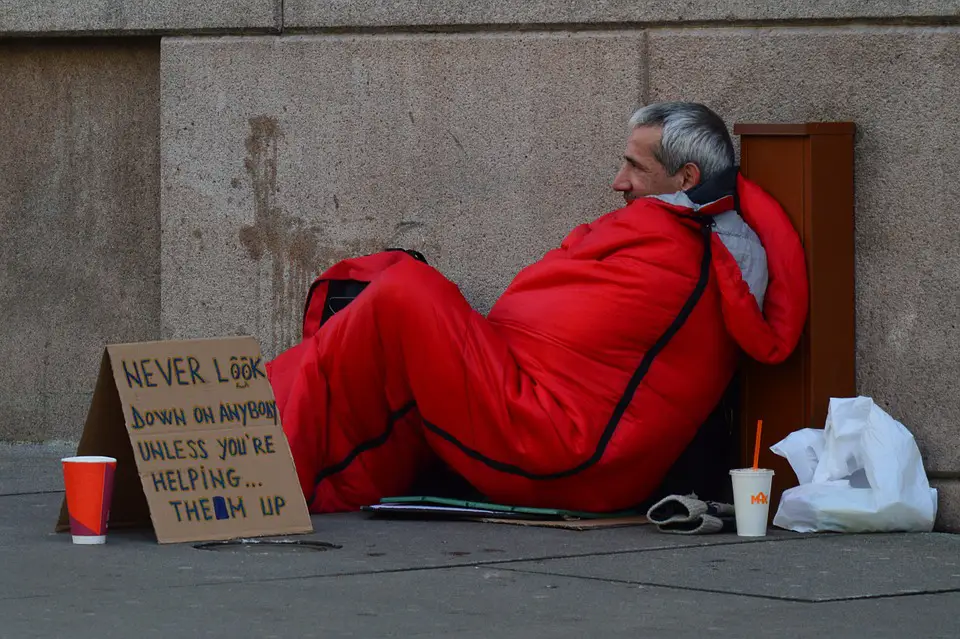
“There is no bad guy in this,” Sgt. Joseph Corrigan propitiated of an unforgiving crackdown targeting do-gooders with the nerve to voluntarily feed people in need — part of wider law enforcement action to quash the act of feeding houseless people throughout Atlanta — to the Associated Press.
There is no bad guy in this.
Activists and advocates for homeless people everywhere in the United States opine ever-tightening legal strictures regarding ‘sharing food’ in public — how feeding houseless people is classified under the law.
According to Georgia State University Police Sgt. Corrigan, a chaplain and head of the department’s homeless outreach, and a plethora of detractors, giving people food serves an acute need, but does little if anything to solve the twin crises of hunger and shelterlessness in the long term — even exacerbating such issues as left-behind refuse, communicable disease, lack of sanitation and restrooms, and more, if allowed to continue.
Indeed, as the AP reports, “About 40 cities nationwide had active laws to restrict food sharing as of November 2014, and a few dozen more had attempted such restrictions, according to the National Coalition for the Homeless. Interim Director Megan Hustings said she doesn’t have updated numbers but that she’s heard about more cities considering such regulations.”
However, The Nation painted a more appropriately dismal if albeit embarrassing picture on the status of feeding houseless people — nearly three years ago, in February 2015 — reporting,
“According to a survey of more than 180 cities by the National Law Center on Homelessness & Poverty, anti-homeless laws pervade urban spaces nationwide. Roughly a third of cities barred public ‘camping,’ for example, up 60 percent since 2011. Restrictions range from prohibiting sitting on sidewalks to imposing steep fees or regulations that effectively criminalize actions of charity groups, often using antiseptic ‘quality of life’ terms (a tent pitched under a bridge becomes an unauthorized ‘camp’). Palo Alto has banned sleeping in parked cars. Mobile has imposed zero-tolerance on ‘aggressive panhandling,’ which could involve just ‘request[ing] a donation from a person standing in line…no matter how mildly the request was made.’ Last year, ThinkProgress reported, Fort Lauderdale authorized police to bust people who ‘store possessions’ on public property — suggesting that homeless people don’t deserve to have what little they carry with them, let alone ‘quality of life.’”
Notably, it isn’t as if these cities have implemented far-reaching and successful programs to replace the lost assistance of do-gooders.
In essence, critics of public charitable food-giving adhere to two problematic mainstays of thought: that people must ‘pull themselves up by the bootstraps’; but, failing that, ‘teaching them to fish’ — pointing them in the direction of assistance and having them enroll, for example, in return for food — rather than simply ‘giving them fish,’ is the only valid means of assisting the neediest of individuals.
Our way or no way, they seem to suggest. There is no bad guy in this.
“We don’t want anybody to stop feeding people. We just want it done in a way that’s connected to social services providers,” George Chidi, social impact director for nonprofit community development organization, Central Atlanta Progress, averred to the Associated Press, “and not on the street corner because we can’t make sure those connections are being made in these street corner feedings.”
Thus, Atlanta joins a shamefully lengthening list of cities choosing to declare a de facto war not only against the condition of being homeless, but against anyone willing to offer the stopgap assistance of an immediate meal.
Case in point, volunteer Adele MacLean with Food Not Bombs — who takes issue with the whole of Chidi’s position — landed a citation and court summons from another University of Georgia law enforcement officer on November 19, after the awareness and advocacy group refused to cease feeding houseless people in a downtown park when threats to obtain a permit were ignored. Although the offense was ultimately tossed by a judge, she feels the incident and the fallacious premise of her supposed transgression symptomatic of the crackdown on homelessness, telling the AP,
“Food is a human right, and you don’t force people to do what you want them to do by withholding food.”
Atlanta and other cities added to obstacles between houseless people and those who would provide them nourishment, predicating any immediate assistance on their entrée into the impoverishment assistance complex — while simultaneously frustrating activists and advocates with a deluge of impossible red tape making the act of sharing food a laborious chore for those attempting to work within its confines.
Indeed, shady tactics apparently land within the purview of enforcing the law.
According to the AP, attorneys for MacLean say police have gone so far as to disseminate a “misleading pamphlet” emblazoned with the city seal and a statement indicating a permit is required to feed homeless people in public — but it isn’t true. A previously unenforced county law exists, notes Reason — which only saw enforcement beginning around Thanksgiving — but none does explicitly for the City of Atlanta.
Southern Center for Human Rights attorney Gerry Weber, representing MacLean, explained restaurants, food trucks, and festival vendors may indeed require permits from the city — people voluntarily sharing food in public without charge, not so much.
Food Not Bombs was forced to challenge a similarly callous ordinance in Fort Lauderdale, Florida, arguing before the 11th U.S. Circuit Court of Appeals in August such crackdowns on feeding houseless people infringe on the group’s constitutional right to free speech, since members share food “as an expression of their political message that hunger and poverty can be ended if society’s resources are redirected from the military and war.”
A decision in the matter has yet to be rendered.
In the interim, charity workers advocating for homeless people in cities across this putatively Great (or, perhaps, Getting There) nation will have to contend with an ambivalent public, ludicrous restrictions, and an eagerly authoritarian body of law enforcement in order to give hungry people food in a public setting.
“I salute genuinely the good will and good nature of all these people,” Sgt. Corrigan insisted to the Associated Press.
“There is no bad guy in this.”
Image: Public domain.
-

 Entertainment3 days ago
Entertainment3 days agoJames Franco Explained How Life Is Now Different After Being ‘Cast Out’ of Hollywood
-

 Awareness3 days ago
Awareness3 days agoBleeding Eye’ Virus Sparks Travel Warning and Worldwide Concern – What Is the Incurable Disease?
-

 Ancient History6 days ago
Ancient History6 days agoNASA Finds Underground ‘City’ Hidden 100 Foot Below Icy Surface
-

 News6 days ago
News6 days agoCalifornian Man Who Spends His Time Searching for Abandoned Cars on Google Maps Has Found Some Unbelievable Things in America






